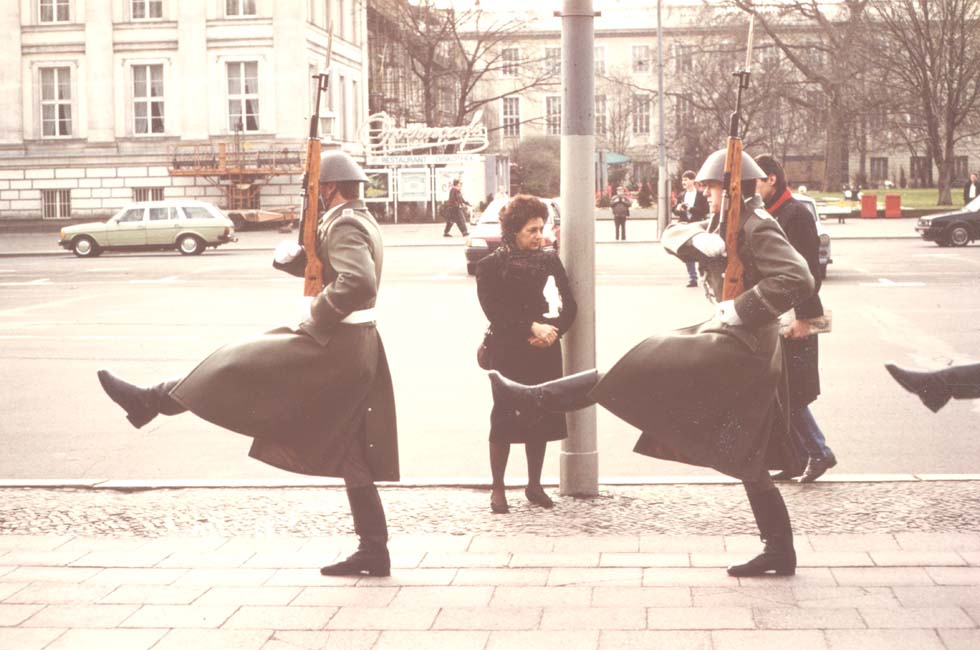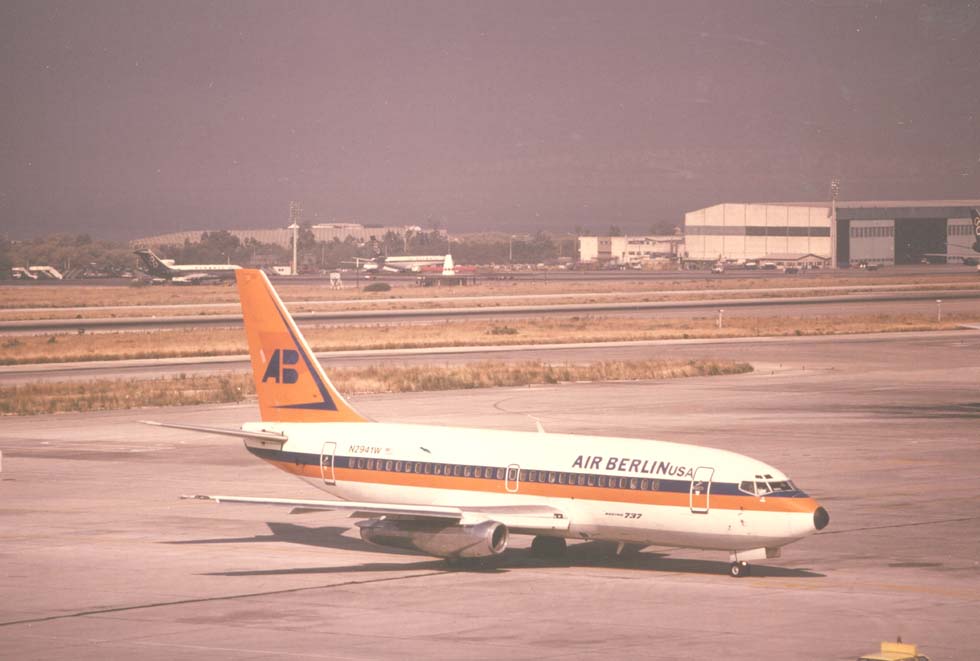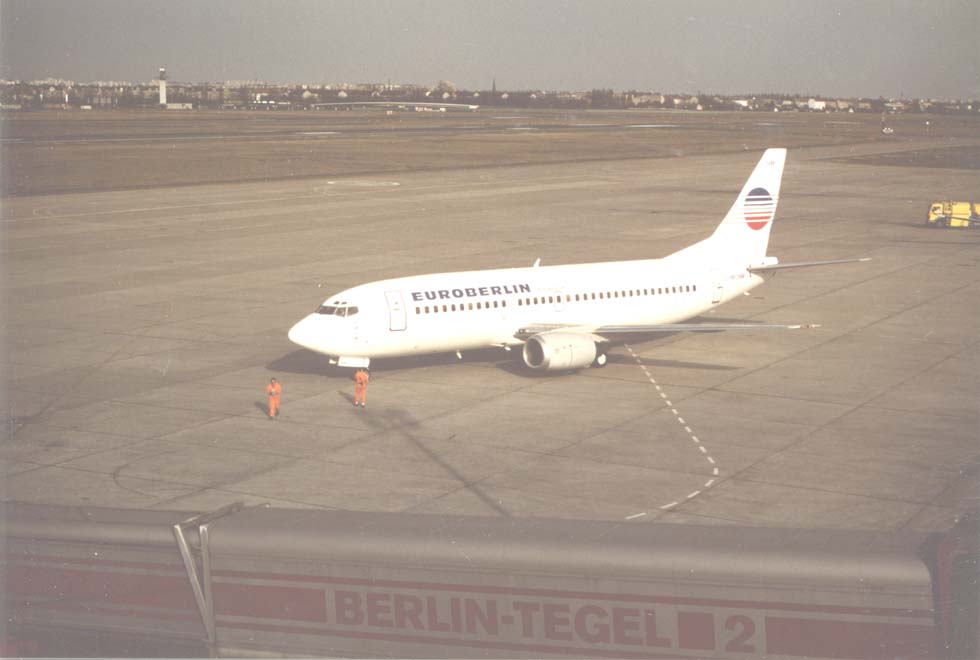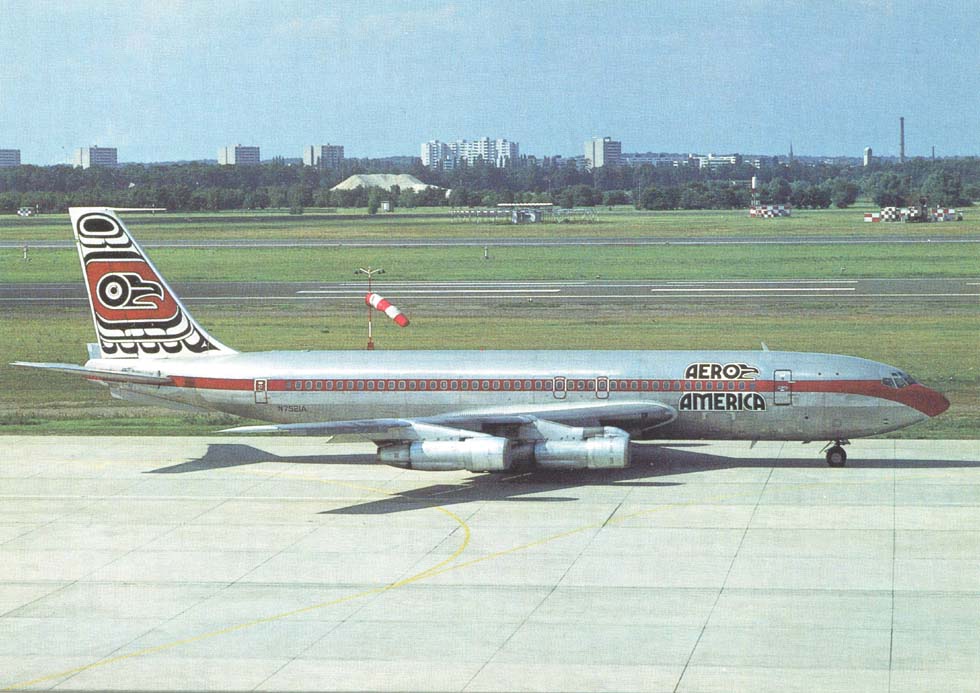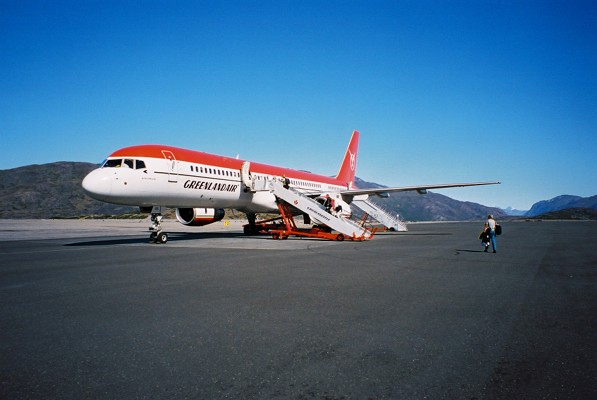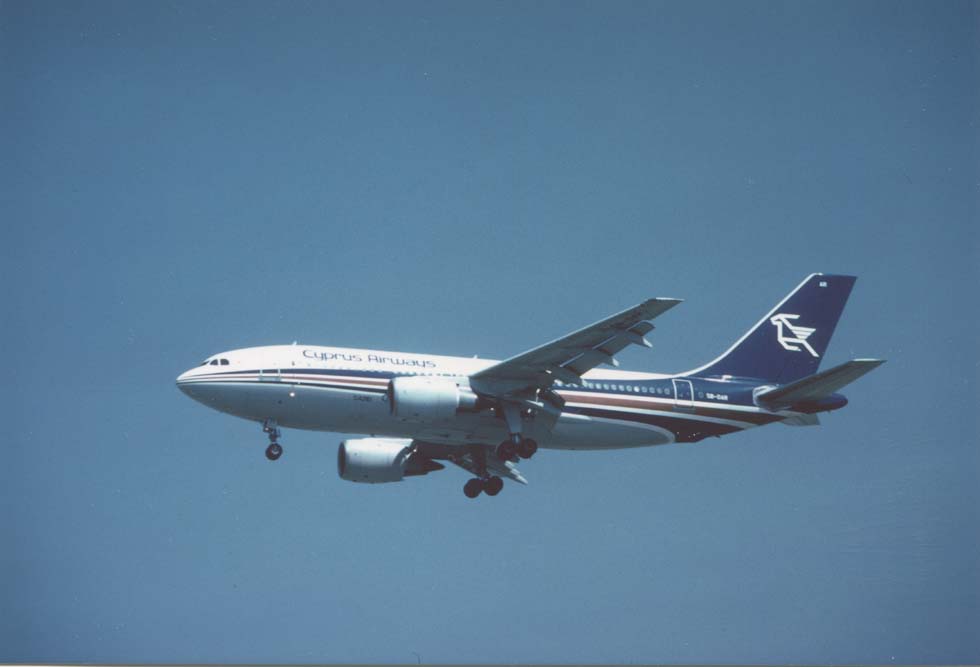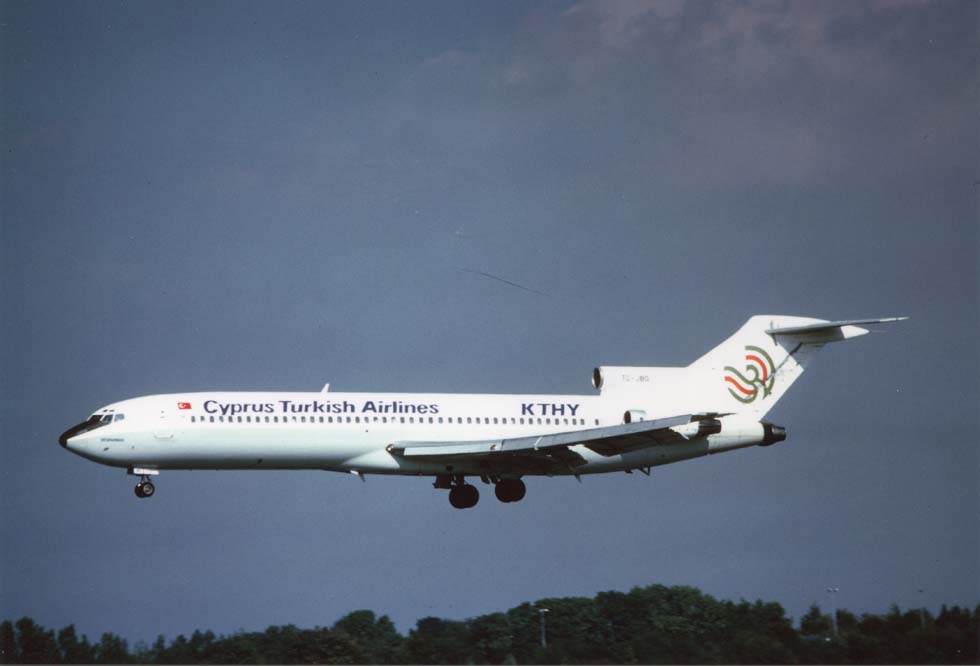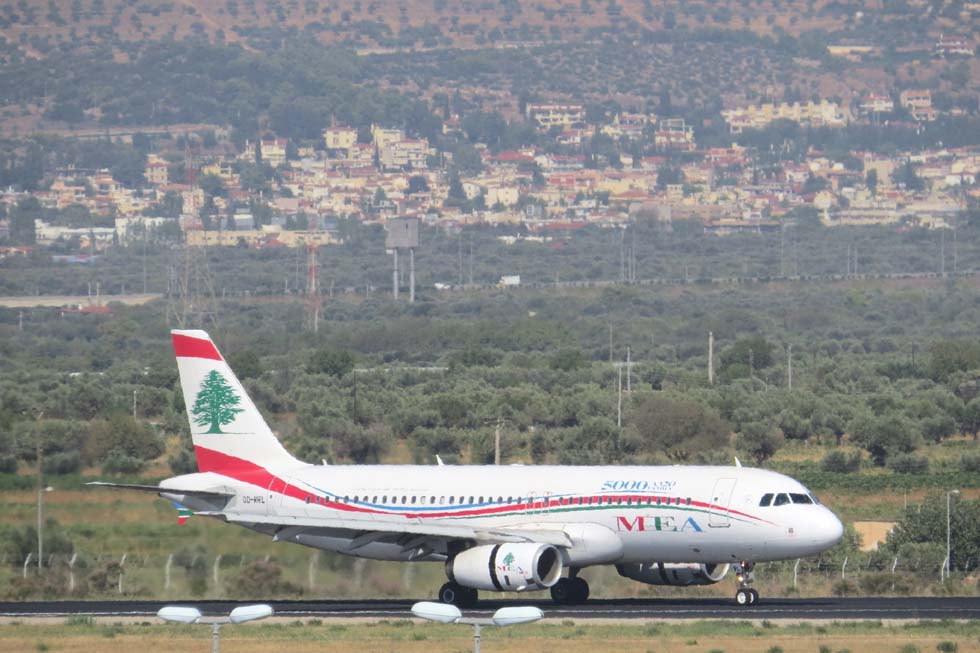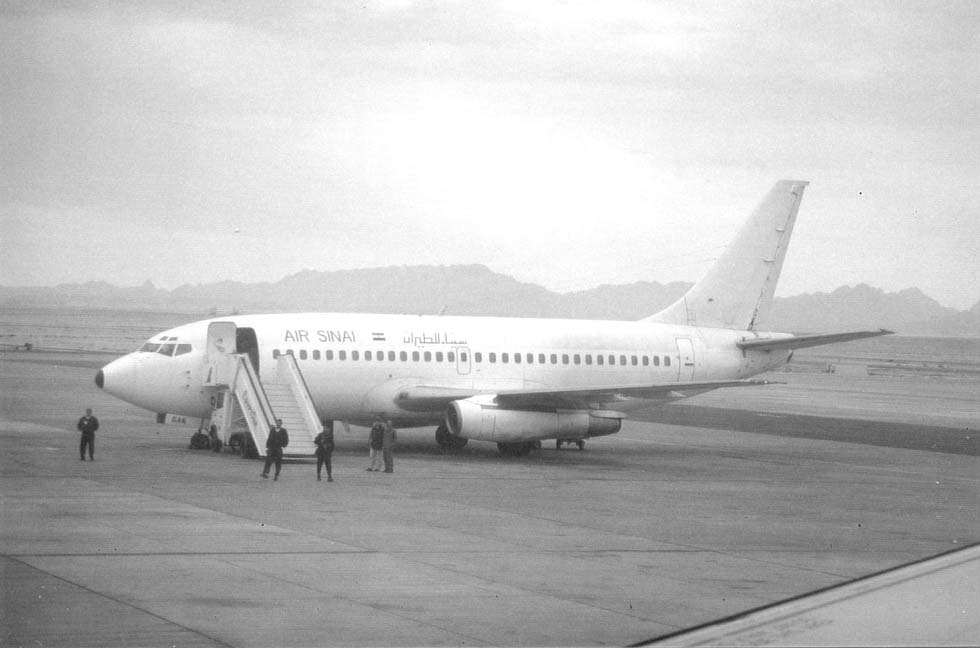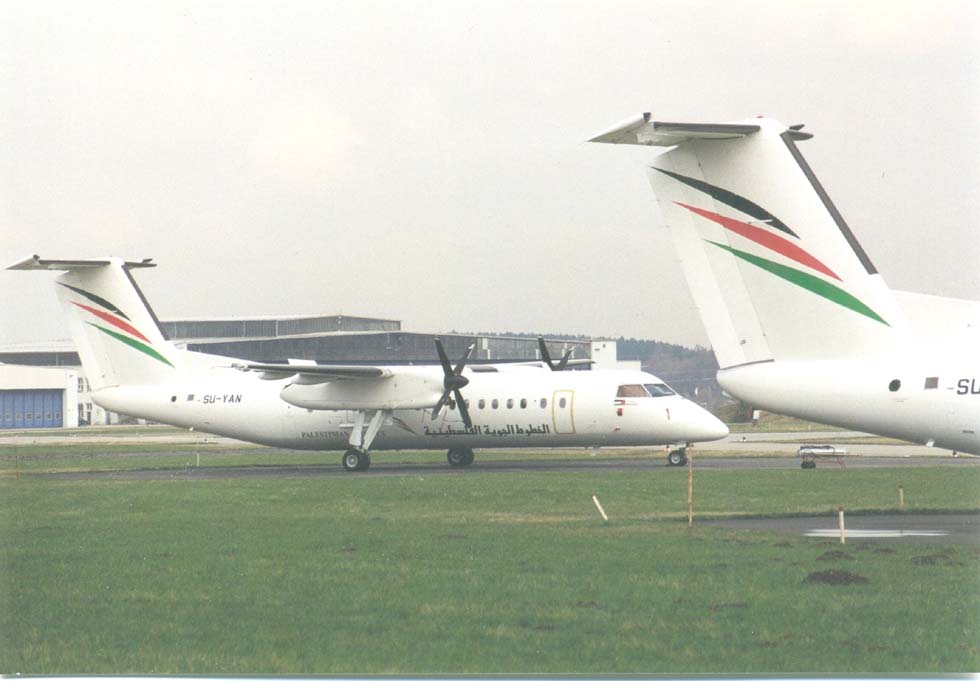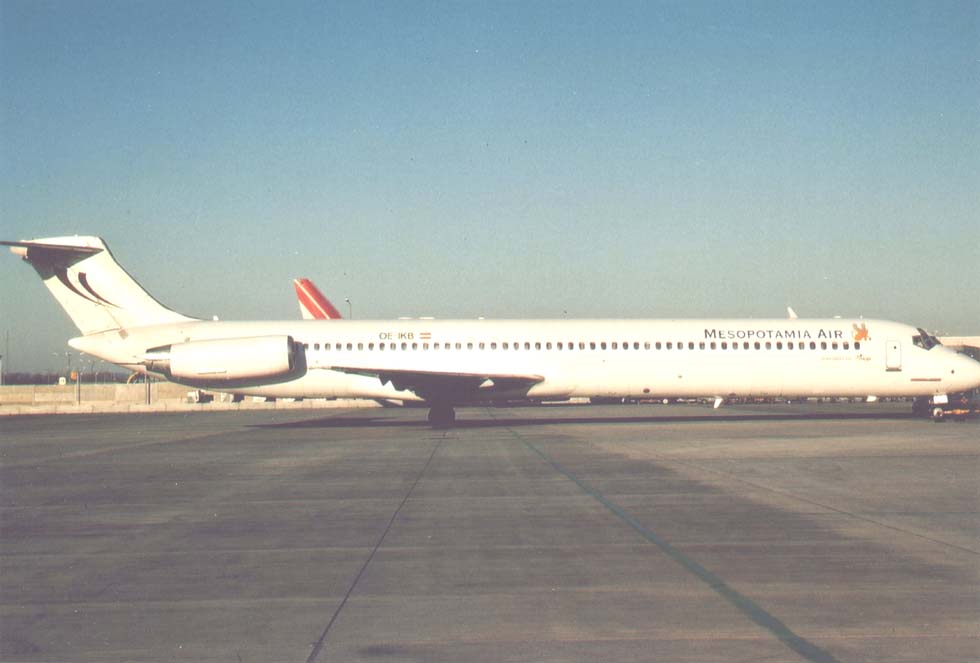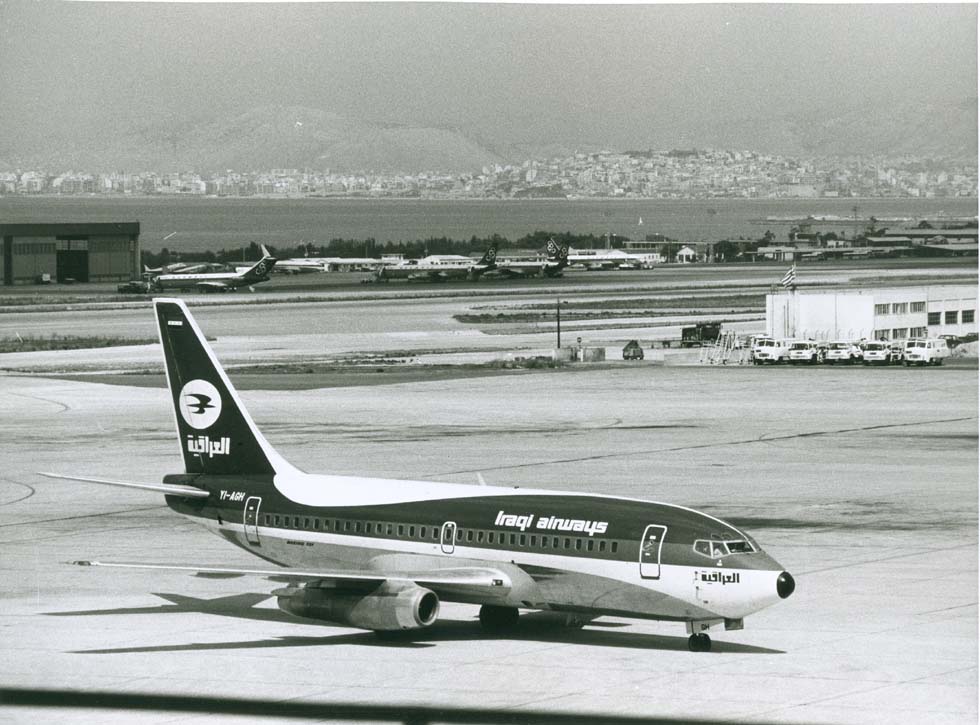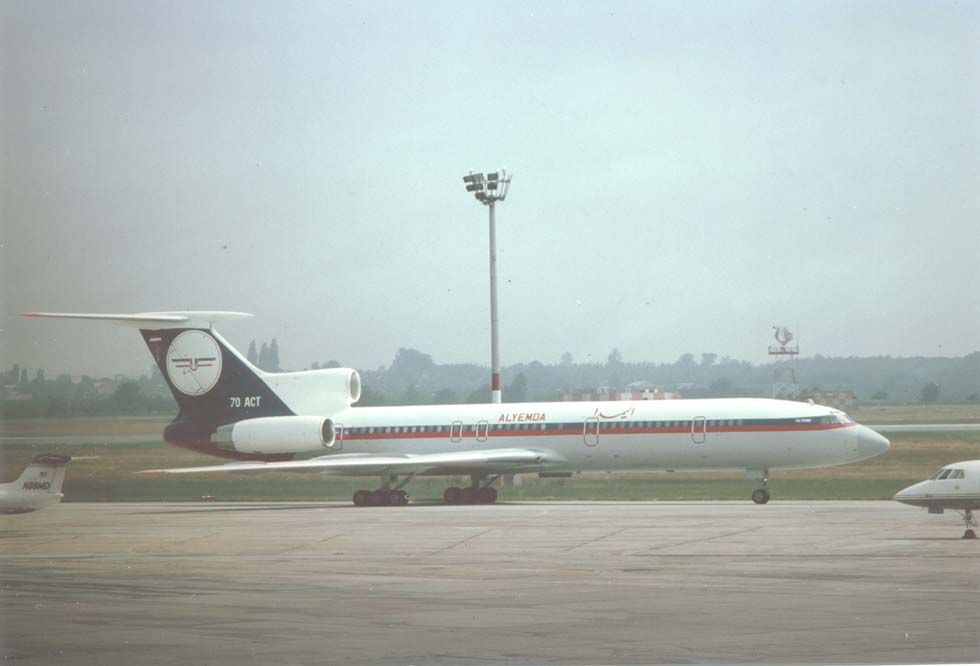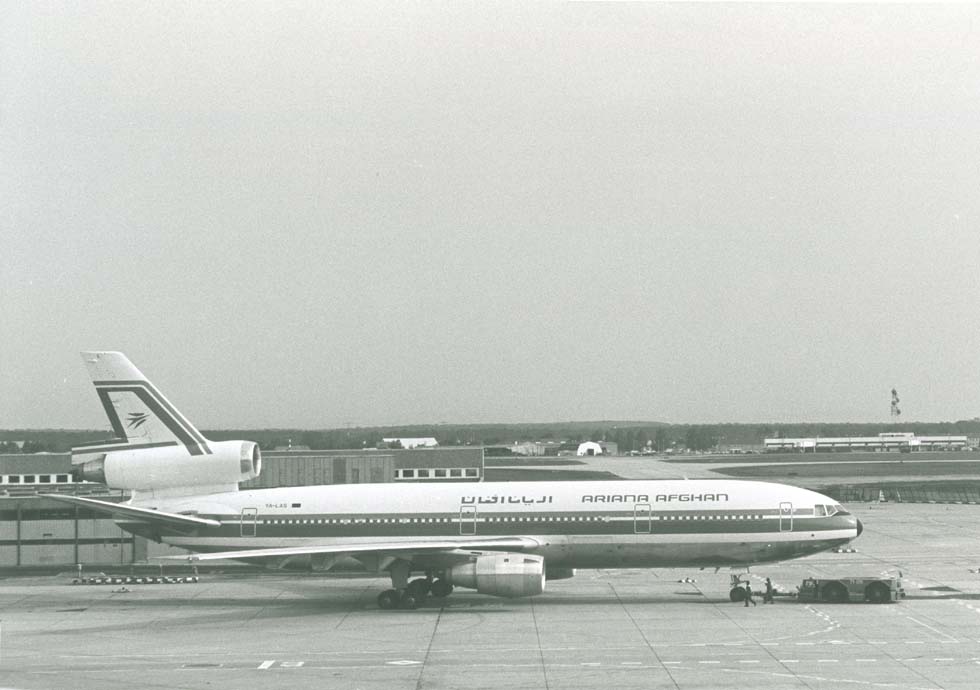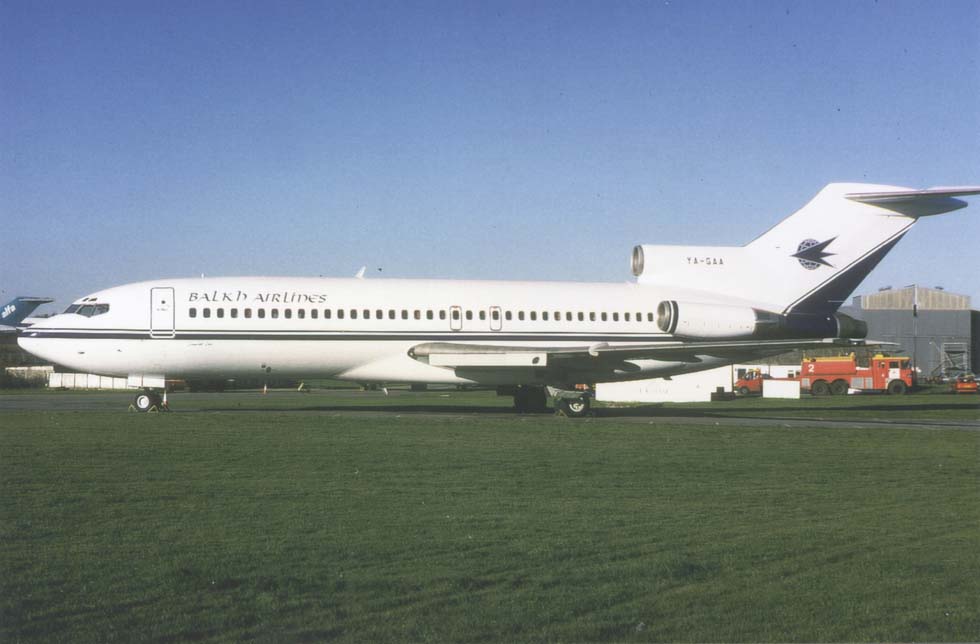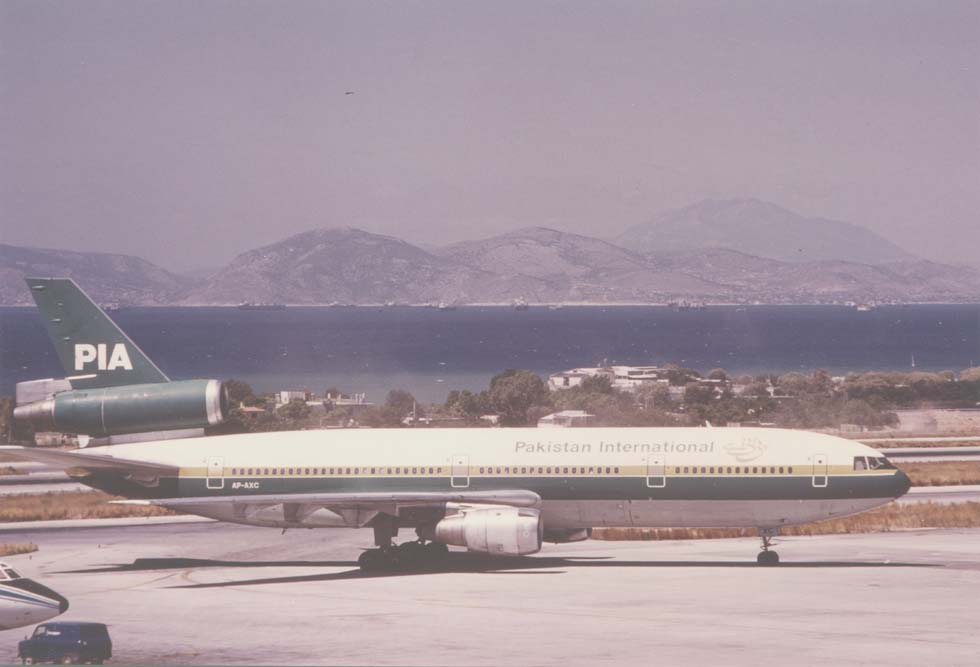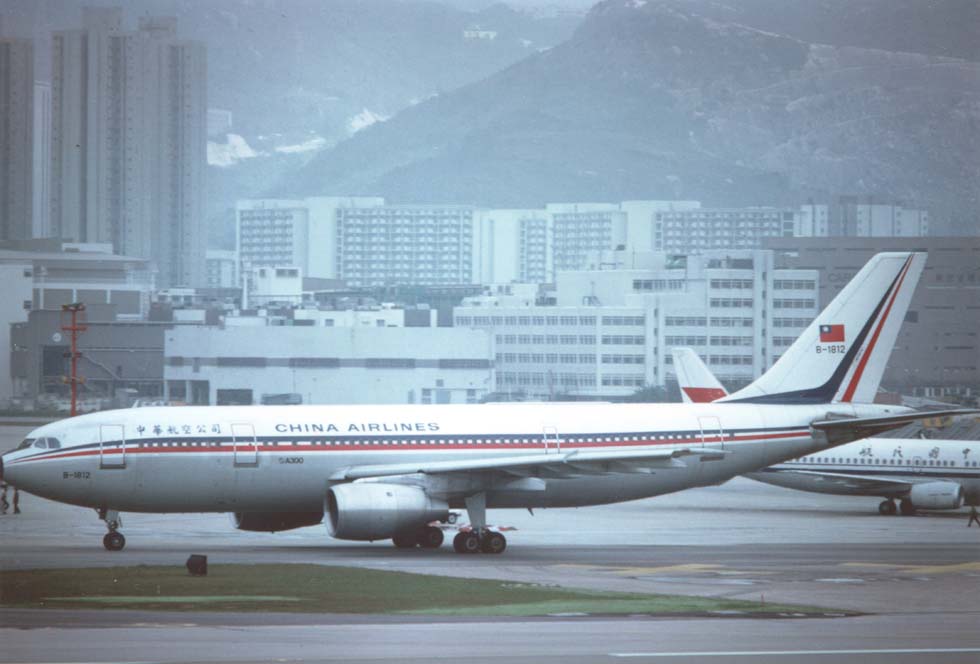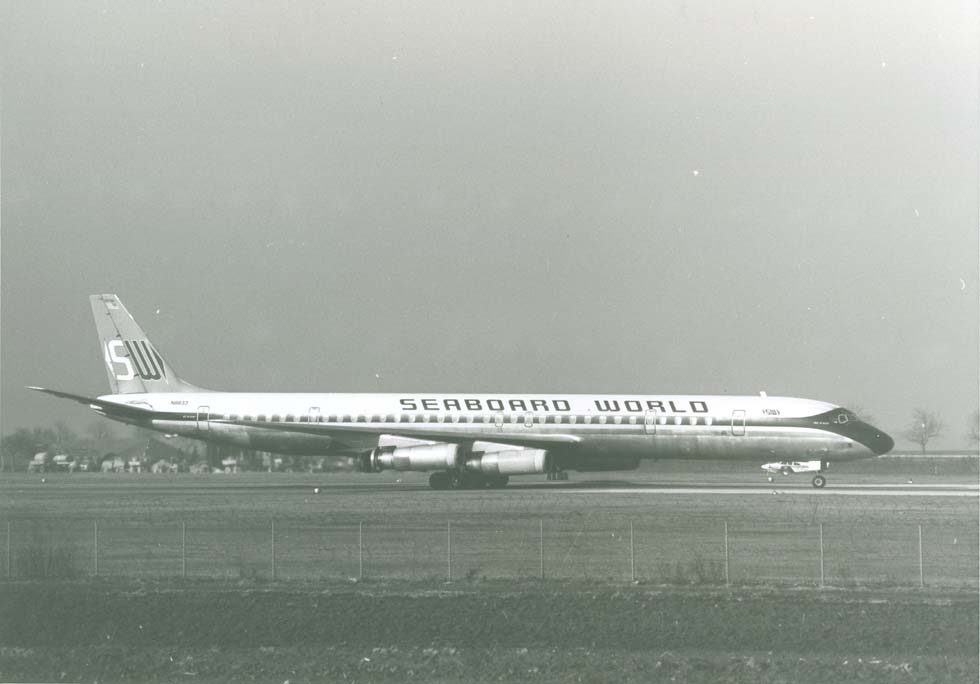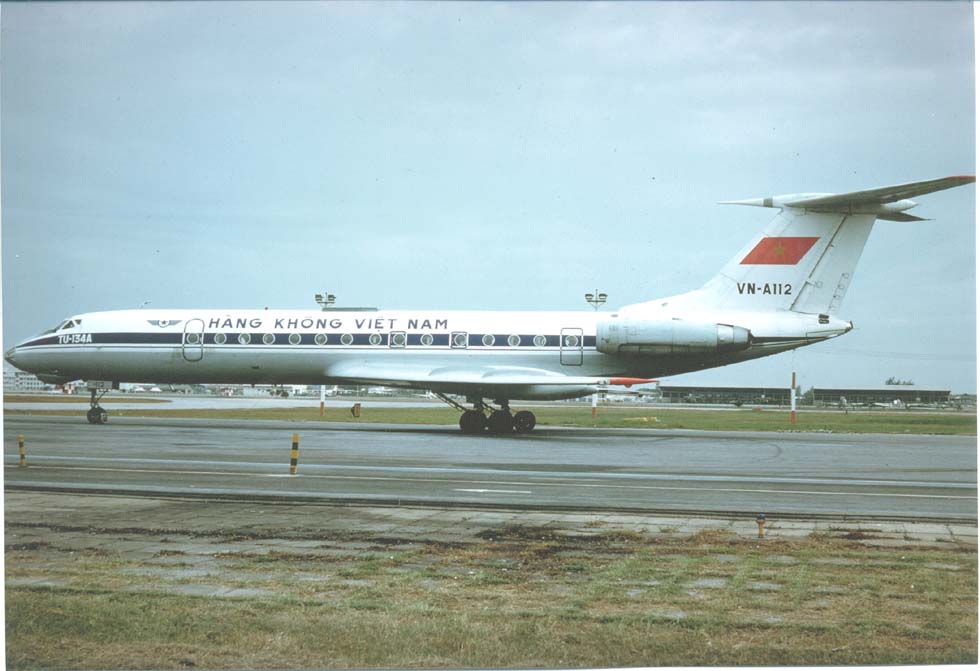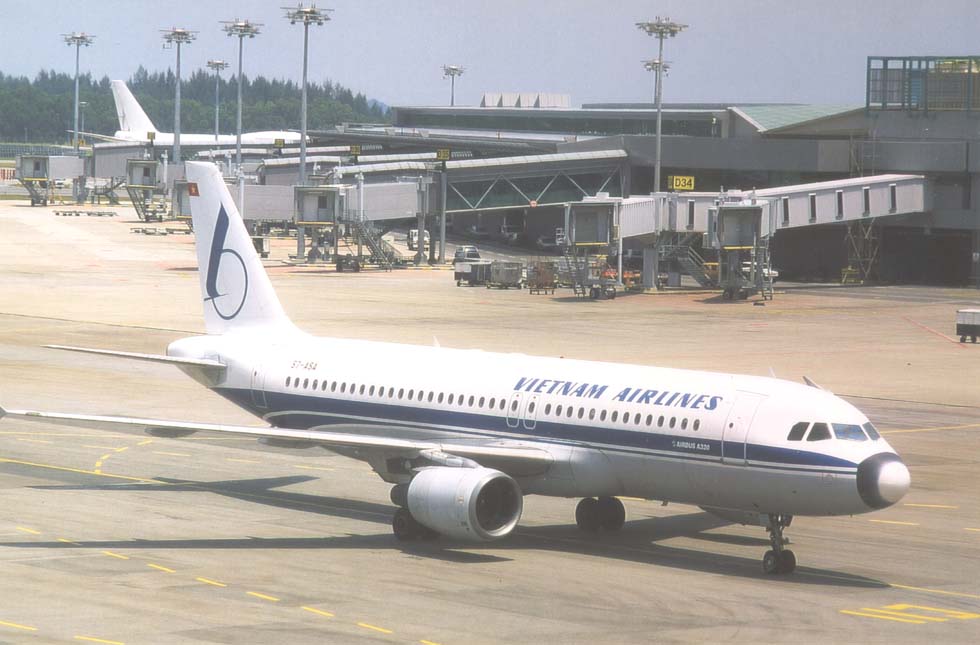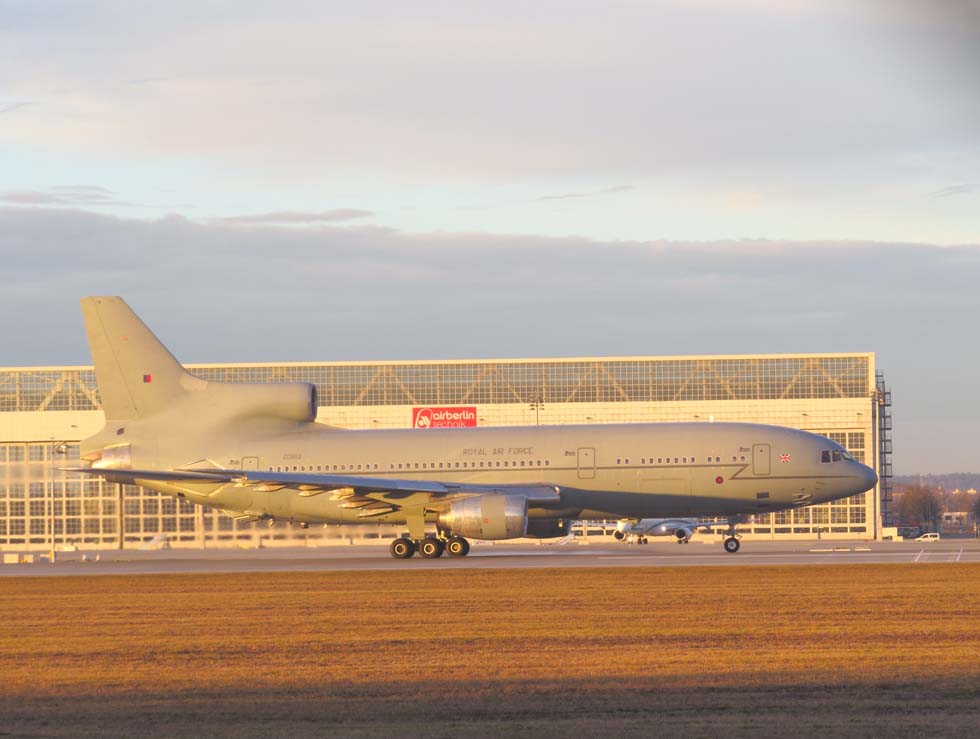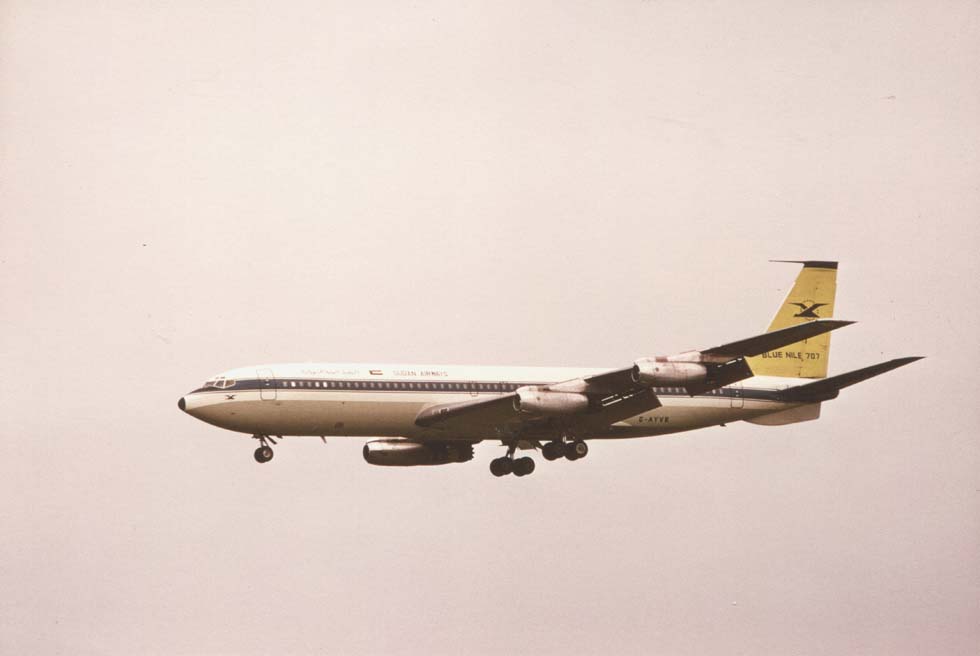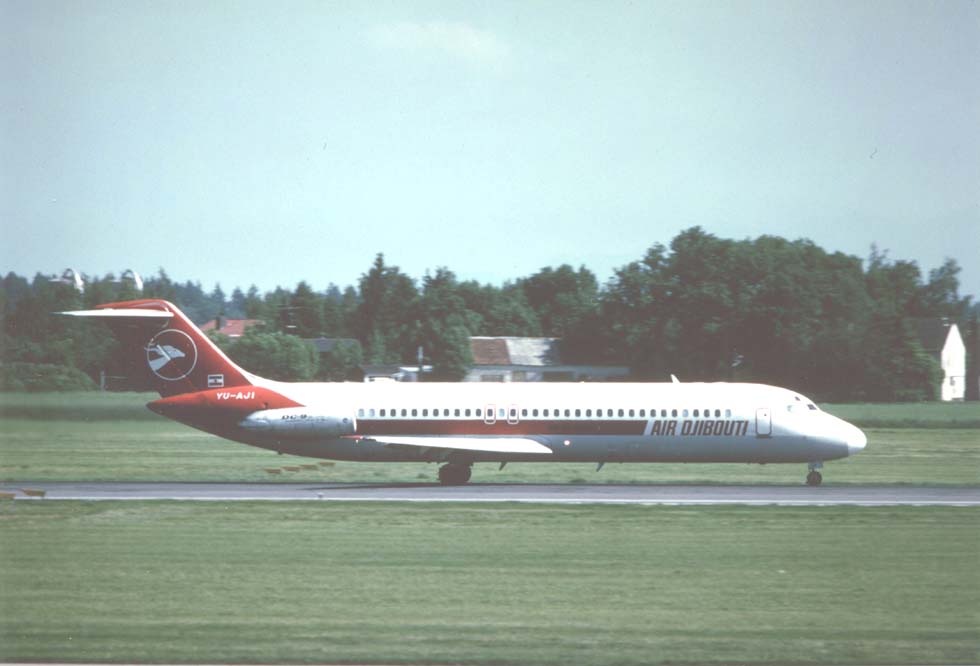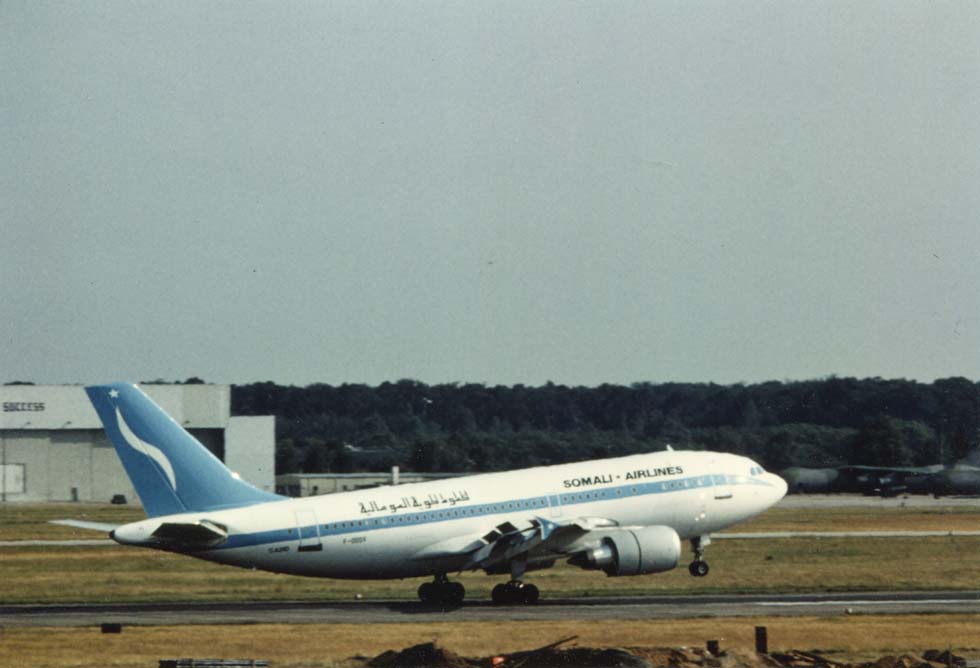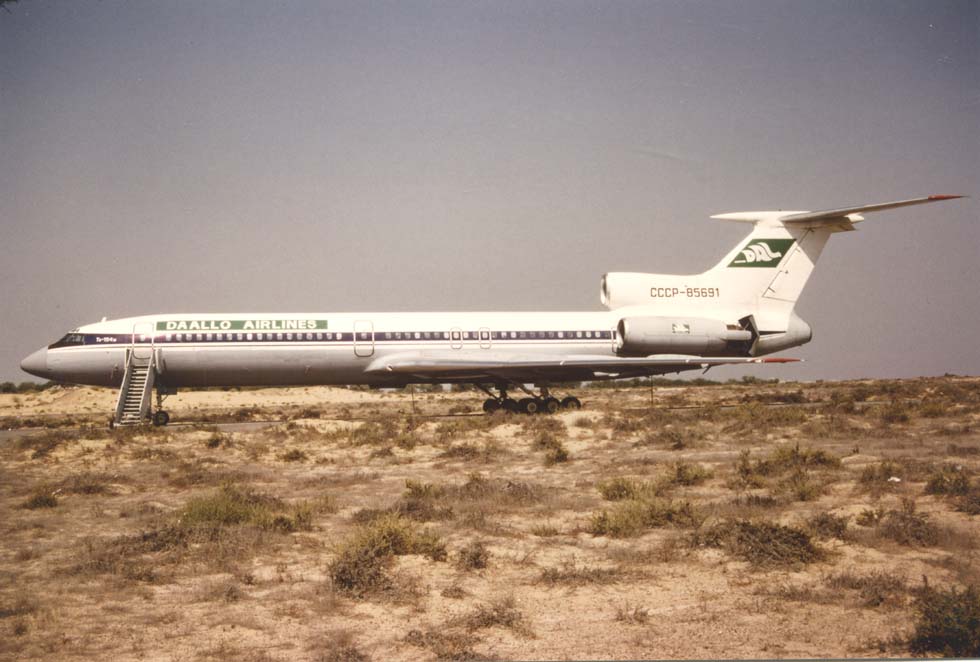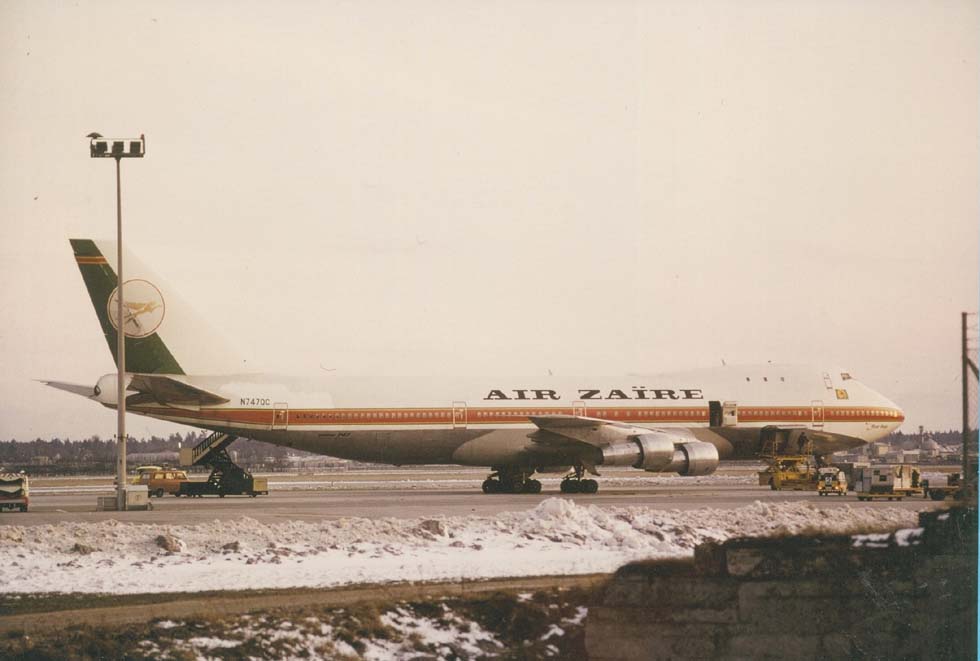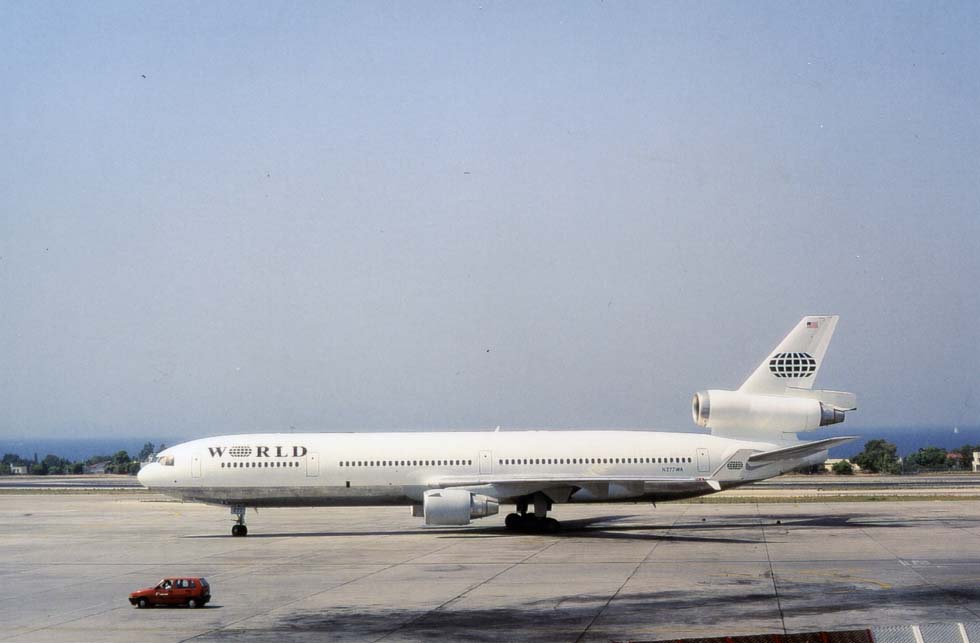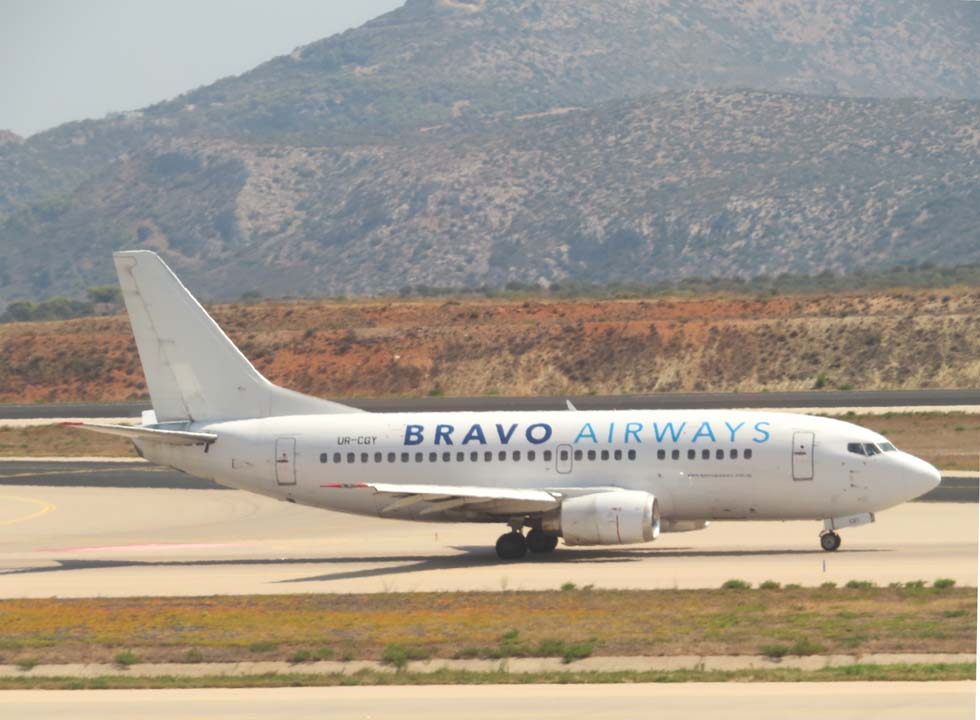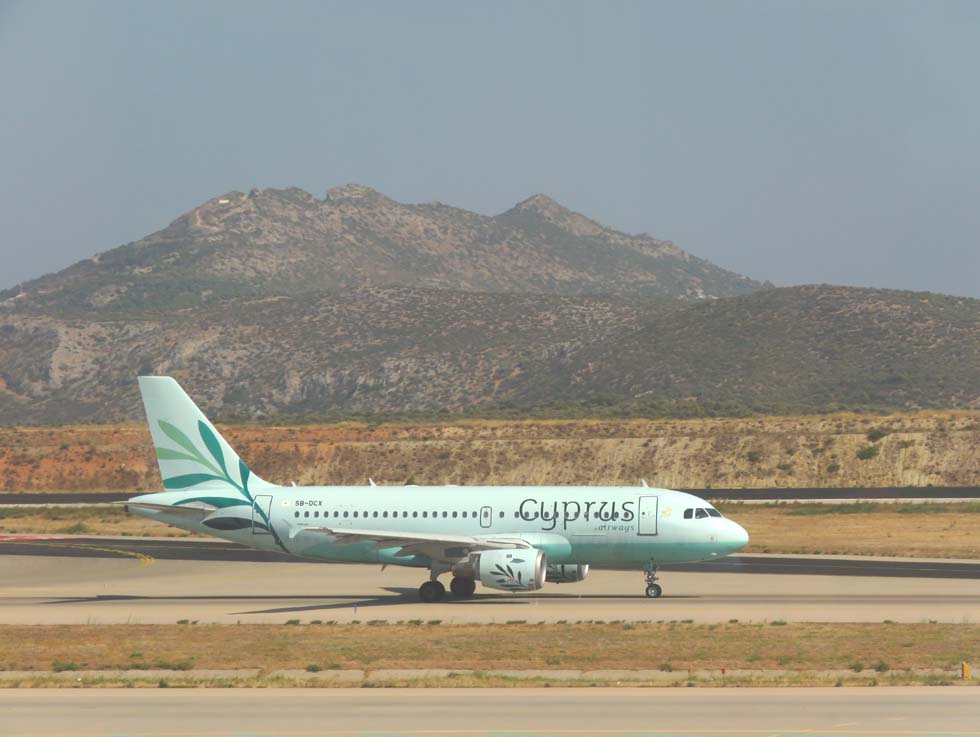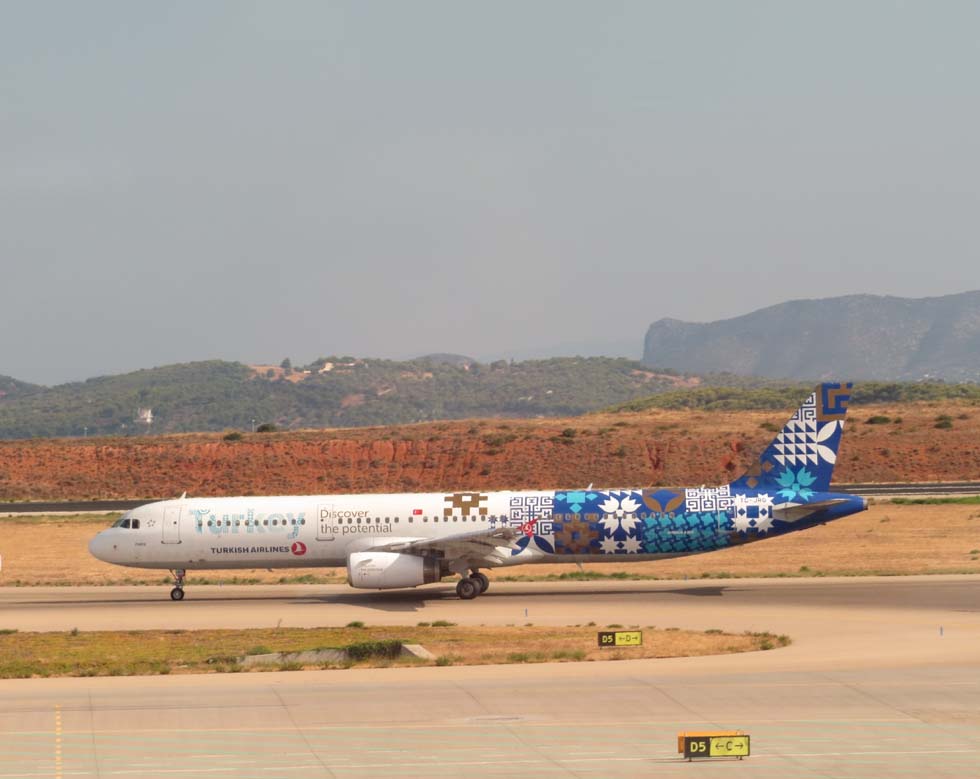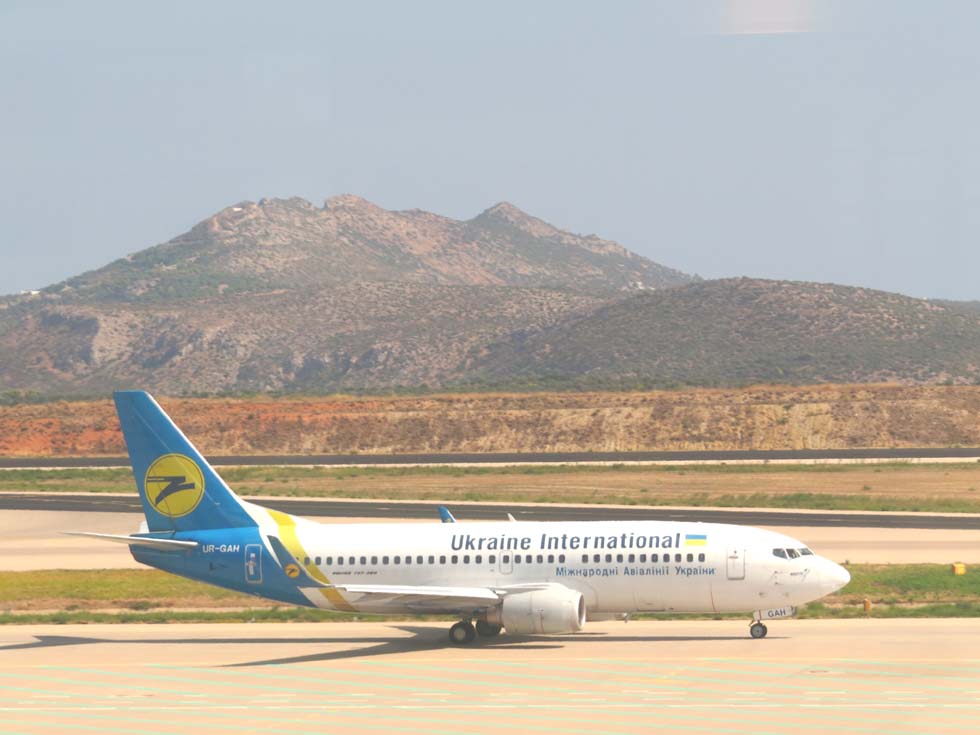|
Conflicts + Strategy
Last updated in early Dec 2024. For leading airlines see the chapter Air Traffic. Cold War During World War II, Churchill, Roosevelt, Stalin and millions of soldiers have fought Hitler, whose ultimate goal was eradication of Russia and then of Asian and African populations. The atomic bomb was developed in the USA mainly by Robert Oppenheimer, obeying the letter written by Albert Einstein and Leo Szilard to president Franklin Delano Roosevelt, right in time before the nuke could have come into the hands of Hitler or Japan. In 1945 nuclear bombs fell on Hiroshima and Nagasaki, killing civilians. Yakov B. Zel’dovich is considered being the “father” of the Russian nuclear bomb and in 1949 the Soviet Union became a nuclear power. After Hitler and his ally Japan had been defeated in 1945, rivalry with the Soviet tyranny culminated in the “Cold War” between the superpowers USA and USSR. In 1949 the USA under president Harry S. Truman founded NATO, the North Atlantic Treaty Organization, including Canada and most states of Western Europe. Little North Korea under Kim il Sung started the Korean War in 1950, but Stalin had not participated. The USA under president Truman and allies defended South Korea. Despite participation of China with innumerable victims, the war was ended in 1953, facing America’s nuclear weapons potential. For many years, Aeroflot flights could not enter the USA, prevented by a reciprocal ban. And flights from Europe to Japan had to take the traditional South East Asia route via India, avoiding Soviet territory. Stalin died in 1953 and under Khrushchev, dictator since 1958, the Cuba crisis of 1962 could have led to a nuclear war. On October15, 1962 major Richard Heyser piloted a U-2 over the Cuban west coast and the cameras showed clearly that the Soviets built up a base for SS-4 (=R-12) missiles, capable of carrying a nuclear bomb to the USA. President John F. Kennedy was confronted with this situation. Hundreds of B-52 and B-47 bombers carrying nukes cruised along the Alaskan frontier, north of Greenland and in the Mediterranean region. A radio message by Strategic Air Command (SAC) general Power on his commanders was understood or misunderstood. On October 24 the Soviet cargo ship carrying the missiles altered course. Air&Space (Oct 2005) quoted a SAC co-pilot of the Cuba mission: “I decided that the world as we knew it could be at an end, and that my family, if they were lucky, would not survive the initial nuclear exchange”. Kennedy was murdered in November 1963 and a Cuba war was avoided by successor Lyndon B. Johnson. Khrushchev was ousted in 1964. In 1984 the Soviets under Brezhnev undertook to place nukes and missiles in East Germany, their “DDR”. The Soviet Union was strangled by communism and exhausted by its Afghanistan war. Pentagon strategist Andrew Marshall found that the size of the Soviet economy was much lower than estimated. Financial Times commented: “This fed into president Ronald Reagan’s strategy of pushing the USSR into an arms race it could not afford.” As a result of Reagan’s ‘Star Wars’ program, succeeding president George Bush (senior) and Mikhail Gorbachev concluded in Dec 1989 the “End of the Cold War”. During that time it was a sensation when a German amateur pilot, the 19 years old Mathias Rust, undertook an illegal flight from Finland to Moscow and landed his Cessna D-ECJB near the Kremlin on May28, 1987. During the Cold War, the USA developed the military global positioning system GPS. For independency, Russia started in 1976 development of its own Glonass system. China followed much later with its military satellite navigation system Beidou. In the USA, president Bill Clinton ordered in 1996 to open GPS also for a restricted civilian use. In 2001 the EU decided for its own satellite navigation system Galileo, but for carrying satellites into space from the base Guyana, not only the European rocket ‘Ariane’ was used, but also the Russian ‘Soyus’ rocket. According to Le Monde diplomatique, Galileo should be usable also for military purposes from 2023.
Dangers in Europe With the German defeat in 1945, Europe was split up into the Western and the Soviets’ hemisphere. The Bundesrepublik Deutschland was constituted in 1949, followed immediately by its communist rival in the East, the “Deutsche Demokratische Republik” (“DDR” or GDR), where opponents were deported into Siberian death camps. In Czechoslovakia, communism took full power in 1948, in other countries earlier. The GDR, Poland, Czechoslovakia, Hungary, Romania and Bulgaria with their flag carriers Interflug, LOT, CSA, Malev (ex Maszovlet), Tarom (ex Romana Sovietica) and Balkan (ex Tabso) have become Stalin’s Soviet “satellites”, and Berlin had been divided up by the superpowers. With the Berlin blockade of June 1948 until May 1949, Stalin risked war tentatively and peace was saved by the Allies’ Airlift of the U.S. Air Force, the Royal Air Force and the French. Flights to West Berlin, the Allies’ enclave, used the three corridors which had been concluded in 1945. Main destination in Berlin was traditional Tempelhof, where a new terminal had been completed in 1936, from 1951 once again used for civilian traffic – a chance for refugees from the East. In November 1948 a runway at Tegel was opened, built on a historic airfield in the West, as Tempelhof and Gatow were insufficient. Also regular air traffic had to use the corridors, open only to Air France, BEA (later British Airways) and Pan American. In Nov 1958 Khrushchev cancelled the Berlin agreement of 1944. Much later the allies gave Berlin traffic rights also to AeroAmerica, Air Berlin USA, Berlin European, Euroberlin, Modern Air (USA) and World Airways. Among the U.S. Supplemental Airlines, World Airways was listed (by Davies) as the largest, started in 1948 and stopped in 2014. Modern Air ended in 1975 and AeroAmerica in 1982. Even Aeroflot flights circumvented this area. For the Soviets, the airport Berlin-Schoenefeld had been opened in 1947 on a former Henschel works area. Romania’s dictator Ceausescu tried to show some independence and his Tarom could have been watched with the IL-62 at New York JFK and with a Boeing 707 even in Israel. Austria, divided by the allies’ occupation zones, was neutralized with the “Staatsvertrag” of 1955. The Soviets retreated from Austria under the condition that it would not join NATO.
Europe is dependent on military protection by superpower USA. NATO members (according to Wikipedia) were since Aug 1949: USA, Canada, Denmark (including Greenland), Belgium, France, Iceland, Italy, Luxembourg, Netherlands, Norway, Portugal and the UK. In Feb 1952 Greece and Turkey were added and in May 1955 Germany, the West. In Spain, traditionally neutral dictator Franco died in 1975 and Spain entered NATO in May 1982. In March 1999 the Czech Rep, Hungary and Poland joined NATO, in March 2004 followed by Bulgaria, Romania, Slovakia, Slovenia and in the Baltic region by Estonia, Latvia and Lithuania. In April 2009 Albania and Croatia joined NATO, followed in June 2017 by Montenegro. Outside NATO were listed Ireland, Sweden, Finland, Switzerland, Austria, Malta and some ex-Yugoslavian countries. Sweden and Finland took up some cooperation with NATO. France and the UK have built up a nuclear weapons arsenal. For Greenland, the USA had concluded a military agreement with Denmark in 1951. Planes of Greenlandair started in 1962, succeeded by Air Greenland in 2002, sporting still the Danish prefix, according to Jane’s (2006) operating also for the U.S. Air Force to its Thule airbase in Greenland. In 2019 Donald Trump’s offer to “buy” Greenland was rejected by Denmark, nevertheless Greenland is dependent completely on the USA. For Ireland, only “a formal relationship since 1999” was listed. And so, an incident could have been reported (via Wikipedia): “In Feb 2015, two Russian Tu-95 nuclear-capable strategic bombers entered Irish-controlled airspace (…) causing serious concern at the Irish Aviation Authority, which was forced to divert a number of civil passenger aircraft.” In 1961 the Soviets’ GDR had built the Berlin wall in order to prevent people of their GDR from fleeing. An armed couple has tried it by abducting an Interflug plane from the GDR’s airport Schoenefeld to the West, the pilot however returned and the couple committed suicide aboard. More lucky were passengers of a CSA Tu-134, bound for Prague, but successfully abducted to Frankfurt. From 1972, SAS and Austrian Airlines got landing rights at Schoenefeld, followed in 1975 by Turkish flights Copenhagen – Schoenefeld – Istanbul. Migrant workers’ flights from West Berlin (Tegel) to Istanbul were not allowed to cross Soviets’ Bulgaria. In 1982 during the Polish rebellion, Warsaw flights were interrupted and in 1989 refugees from the GDR were flown out from Warsaw by LOT. Upheavals against the Soviets have occurred in 1953 in the GDR and in 1956 in Hungary, brutally knocked down and the Soviets executed president Imre Nagy. Revolution in Czechoslovakia by Alexander Dubcek in 1968 was prevented by Soviet-led troops. The Soviet Union kept its European territory until its economic collapse. In November 1989 the Berlin Wall did fall and in 1990 Mikhail Gorbachev and George Bush senior agreed on Germany’s reunification. The German foreign minister Hans-Dietrich Genscher had offered that the German army with 500,000 soldiers would be reduced to 350,000 soldiers of a reunited Germany – and the deal worked (so described by Genscher’s interview with Sueddeutsche Zeitung, Aug21, 2015). The Soviets’ missiles and nuclear warheads were removed in 1991 by train and train-ferry via the port of Mukran on Ruegen, top-secret (in 2018 reported by NTV), while US nukes were reported still in 2019 (by tz, April23) being stationed in Rheinland-Pfalz, criticized by public opinion. Under chancellor Helmut Kohl the reunification was successful and traffic got normal. In 2018 Germany announced to rise military spending to 1.5% per GDP, then 2%, targeted by NATO, while the USA spent 4% e.g. in 2013. Estonia, Latvia and Lithuania, annexed by Stalin in 1940, have separated and so they replaced Aeroflot with their own flag carriers. They became NATO members under certain conditions. Slovakia separated from Czechoslovakia peacefully in 1993. CSA Czech Airlines was saved in 2013 by Korean Airlines, which took a 44% stake.
In Yugoslavia during WWII, the Litorale Adriatico came under Italian rule. Croatia was occupied by the German army, fought by Tito (Josip Broz, a Croatian). After the war, communist Tito ruled Yugoslavia until his decease in 1980. The Allies protected the ‘Territorio Libere di Trieste’ until 1954, then once again Italy. In Greece after WWII, the communists’ civil war raged until the late 40s and Yugoslavia, not Stalin, is considered having supported it. Tito did not surrender to the Soviets, he reportedly has wanted Bulgaria to be by his side and so the Soviets excluded Yugoslavia from their Kominform in 1948. The airline JUSTA was replaced by JAT. In 1991 provinces split up the country, leading to wars with Western intervention. The Bosnia massacre provoked a flight embargo on Yugoslavia. Air Commerce did fly from Belgrade to Germany instead of the banned flag carrier JAT. In 1990 Serbia under Milosevich terminated an autonomy status for Kosovo and UCK rebels started war. In 1996 flights from Kosovo to Munich were operated by Air Yugoslavia, a JAT subsidiary. Reportedly it was managed to transfer millions of dollars out of Serbia by trusted JAT employees. After the defeat in 2000, Milosevich’s son fled aboard a JAT B.737 to Moscow. When JAT had been banned temporarily in 1991, a short-lived Palair Macedonian appeared on international routes, stopped in 1996. In Kosovo, NATO intervened, Serbia retreated and Kosovo came under UN administration in 1999. Its Pristina airport temporarily had to be closed. In 2016 a Cobrex Trans operated flights to Pristina with an Air Kyrgistan-registered B.737, followed by Fly 365 of Romania and then mostly by Germania (see LJ 2019). Appetite for daughter Germania Flug by an Air Pristina was a rumor. Kosovo declared independence in 2008, recognized by the majority of UN member states. In 2020 at least a restart of air and train services Belgrade – Pristina was reported. In Moldova, a new Hi_Sky started international flights. In 2006 Montenegro abandoned the state Serbia-Montenegro, the renamed relics of Yugoslavia since 2003, and so it could join NATO in 2017. Montenegro Airlines vanished in late 2020, but then Air Montenegro emerged. In 2019 the former Yugoslav Republic of Macedonia prepared for NATO membership by changing name into North Macedonia for better relations with Greece. In Bosnia-Herzegovina, rebels threatened for separating Srpska. In Albania, dictator Enver Hoxha died in 1985 and ultra-communism collapsed in 1990. Refugees escaped by walking across the border. When in 1997 troubles crippled the country, the U.S. Air Force had to protect Tirana airport. Then peace re-emerged and with a new air traffic management more international flights crossed Albania, since 2009 a NATO member.
NATO member Greece has been subjugated in 1967 by a military dictatorship under colonel Papadopoulos, possibly preventing dangers of a conflict. But Papadopoulos was discharged by colonel Ioannides and in 1974 the neutral Cypriot ruler archbishop Makarios was ousted, thus provoking the Turkish Cyprus war. The generals lost and democracy was reestablished in Greece. Cyprus Airways’ fleet was destroyed and its flights were suspended until Feb 1975. In that year Northern Cyprus, the refuge of the Turks, was separated, recognized exclusively by Turkey as its military outpost. Its airline has become Cyprus Turkish Airlines, started in 1975 by Turkish Airlines, then being the unofficial flag carrier Kibris Turk Hava Yollari with headquarters in Nicosia. Cyprus Airways, official flag carrier since 1947, had to remove its headquarters from divided Nicosia to Larnaca and Turkey refuted to recognize the Republic of Cyprus. During the decades of the Cold War, NATO member Turkey has been a strategic outpost against the Soviet Union. In 1945 the Soviets had appreciated creation of a Kurdish republic Mahabat in the west of Iran, but troops of the Shah had prevented it.
Mideast Conflicts In conflict-ridden formerly British Palestine, Israel was founded in May 1948 under president Chaim Weizmann and prime minister David Ben Gurion. Immediately, six Arabian states started war, until in April 1949 a ceasefire was achieved by the UN. Flag carrier El Al was formed “in 1948 with aircraft transferred from the Israel Airforce Transport Command” (so reported by ‘The Pocket Guide to Airline Markings’). Jerusalem was divided and in August 1949 Ben Gurion travelled there by train, escorted by a fighter plane. In the same month El Al started flights from Tel Aviv to Paris and since 1951 it connected New York. For connecting the southern outpost Eilat, El Al-participated Eilata Airlines started in 1950, then renamed Arkia. After the USA clashed with el-Nasser, Egypt’s dictator from 1954 to 1970, he nationalized the Suez Canal in 1956, provoking the allies’ ‘Suez Adventure’ with Israel’s military help. In 1957 UN troops were stationed in Gaza. Conflicts continued with the Six-Days War of 1967 and Nasser lost the Sinai. Syria has got independence in 1946. Nasser’s “United Arab Republic”, comprising Syria, has lasted only from 1958 to 1961. Syrian Airways of 1946 had been replaced by United Arab Airlines in late 1958. A new Syrian Arab Airlines became its successor in 1961. Multi-religious Lebanon, once prospering, had become a refuge of the anti-Israeli PLO. In December 1967 Israeli commandos attacked Beirut airport, Israel defended itself and in 1992 it forced the PLO to leave Beirut. Lebanon was ruined by civil war since 1975, nevertheless flag carrier MEA of 1946 had survived, controlled since 1996 by the Banque du Liban, led by Riad Salame (see Le Monde diplomatique, Aug 2021). In Syria, Hafez al-Assad took power in 1970. With the Yom Kippur War of 1973 against Israel, Egypt under as-Sadat cooperated with Syria – and lost the war. Syria’s flag carrier was renamed Syrianair in late 1975. The fleet had been a political mix, with the Caravelle, Tupolevs and then even the B.747SP. Syrian troops left Lebanon in 2005. Jordan has become a kingdom in 1949, from 1953 ruled by King Hussein and further on by his Hashimite dynasty. Jordan Airways in Lebanese ownership was succeeded in 1963 by Alia, in 1986 labeled Royal Jordanian Airlines. Having knocked down Hamas-connected rebels, Jordan maintained stability.
Complicated route restrictions around Israel and Syria were the result of all the conflicts. When the author took an Iran Air flight Tehran – London in 1973, after the regular stop at Abadan the 727 turned northward, thus avoiding Iraq, Syria and Lebanon on the way to the next stop at Athens. After US Secretary of State Henry Kissinger had initiated peace talks in 1973, the Egyptian president as-Sadat opened up the air link with Israel – and he was murdered in 1981. Palestine leader Yasir Arafat started talks with the UN in 1974. Israel left the Sinai peninsula after 1979. Egypt’s Air Sinai, founded in 1982, was described (by B.I. Hengi) having provided services to Tel Aviv. Iraq’s nuclear reactor was destroyed by an Israeli attack. Royal Jordanian was the region’s only airline legitimized to fly to Israel. In 1993 U.S. President Clinton arranged an autonomy agreement between Arafat and Israel’s prime minister Rabin, murdered in 1995. Opening Gaza Airport in 1998 by Clinton and Arafat was considered a symbol for a future Palestinian state. Already in 1997 Palestinian Airlines had started flights from Port Said, then from El-Arish in Egypt, then from Gaza. Apart from regional turboprops, there was a leased Boeing 727, sponsored by a Saudi prince. Hamas’ terror however raged, Israel’s revenge in 2001 destroyed Gaza International Airport and Palestinian Airlines moved to El-Arish. In 2010 it disappeared from the World Airlines Directory. Iran-financed Hamas has become dominant in 2007.
The CENTO treaty with the USA was to maintain stability in the Middle East. But its preceding Baghdad Treaty was abandoned by Iraq with the coup of 1955, when Kassem ousted King Feisal. In Sept 1979 dictator Saddam Hussein started the war for oil against Iran, where the Shah had been ousted in Jan 1979 by Ayatollah Ruholla Khomeini. Iran defended itself by using also children as soldiers and Saddam’s bloody Gulf War, tolerated by Western powers, ended in 1988. Syria had interrupted the oil pipeline from Iraq and in 1982 it stopped also the Taurus-Express train Istanbul HP – Baghdad. Kuwait has become independent in 1962, but BOAC began to exit Kuwait National Airways already in 1958, then reconstituted as Kuwait Airways. Saddam conquered Kuwait in 1990 and Kuwait Airways needed a temporary refuge at Cairo. The USA under president George Bush senior liberated Kuwait with the operation Desert Storm of 1990-91, thus preventing a danger for the states of the Gulf Cooperation. This GCC, founded in 1981 with Saudi Arabia, comprised Kuwait, Bahrain, Qatar, the United Arab Emirates and the Sultanate Oman, peaceful states. The Gulf War, ‘Desert Storm’ and the No Fly zone imposed on Iraq in 1991 forced transit flights to Asia to take the Iran route. Iraqi Airways (started in 1946 by the state railways) was temporarily stopped. Then Kuwait Airways opened flights to Iraq and in 1993 Iraqi Airways resumed domestic services. In 2003 son George W. Bush offended the consent on peace by starting the Iraq War, participated by the UK under centre-left Tony Blair. Half a year later, only a few planes on official missions or for contractors arrived at Baghdad. A DHL cargo Airbus was hit by a shoulder-fired missile and Royal Jordanian postponed its intended Baghdad flights. The trade press reported the exclusion of World Airways from flying over Austrian territory to Baghdad, but it was not difficult to find another route via Czechia. In 2003 United Iraqi, initiated by the Kurdistan Development Council of Iraq, was formed with the intention of providing services to the Kurds’ northern enclave. “Established by Iraqi Kurdish interests”, Mesopotamia Air started in 2008 flights Sulaimaniyah - Vienna with the MD-83 OE-IKB, wetleased from Mapjet of Austria (according to Flight Intl). In 2009 Hamburg International subsidiary Kurdistan Airlines undertook flights to Erbil. The Zagros Group, active in this semi-autonomous region, founded an airline which operated until 2008. In 2013 Zagros Air started, renamed Zagrosjet. One A321 was reported, operated by Onur Air of Turkey. Iraqi Airways’ B. 707 and 727 had been stored at Amman since the Gulf War. In September 2004 Iraqi Airways opened services Amman – Baghdad with a B.737 leased from Teebah Air. This company from Jordan had 727s and 737s, registered with Sierra Leone, operating for Kam Air (Afghanistan), Palestinian Airlines and in the Congo. In June 2006 Iraqi Airways resumed flights Baghdad – Basrah (info by B.I. Hengi). Even an Iraqi B.747 appeared in Jeddah on Haj flights.
In 2006 the Iranian Shi’ite Hizbollah, controlling Lebanon, made an attack on Israel, which answered by bombing Beirut International Airport. Middle East Airlines MEA had to find a temporary refuge at Amman. Syria under the al-Assad dynasty had approached Iran when Saddam of Iraq has started hostility. Nevertheless when an Iranian radar station in Syria was destroyed by Israel’s air force, some sources assumed a secret cooperation with Israel. In 2007 “Israel destroyed a nuclear reactor believed to have been built with North Korean help in Syria” (so reported by The New York Times). In 2011 upheavals against Assad started in Deraa, the Syrian border station of the railway to Jordan. In the same year, the road to Baghdad was blocked. Cook Overseas Timetable warned (e.g. in 2008-09): “Note that due to the political situation in Iraq, it is not advisable to travel on any form of public transport without a military escort.” On Oct10, 2012 a Syrian Airbus was forced to land at Ankara, suspicious of transporting weapons for al-Assad. Syria answered by excluding planes from Turkey and, logically, Syrian planes were banned from crossing Turkey. “US Secretary of State John Kerry confronted Baghdad for continuing to grant Iran access to its airspace”, reported The Nation (March26, 2013). Then Putin announced the delivery of missiles to al-Assad. In April 2013 a Nordwind A320 of Russia was almost shot down over Syria by some warriors’ missile. At that time flights from Europe to the Emirates took a route crossing the Black Sea, Turkey, Iraq and Kuwait, thus avoiding Syria and Iran.
Yemen was no longer a kingdom. Egypt’s el-Nasser has targeted to incorporate it into his United Arab Republic, a failure. In 1962 Yemen was split up. The north formed the Yemen Arab Republic. The former British Aden protectorate was since 1967 the Soviet-dependent “People’s Democratic Republic of Yemen”. Its flag carrier Alyemda was formed in 1971, listed (by JP) even with a B.707 and a B.727. In the north, Yemen Airlines of 1961, then Yemen Airways since 1972, was listed with three B.727, leased from World Airways. It got the successor Yemenia in 1978, 49% held by the Saudi government. After riots in 1986, the airport of Aden was reopened. With the collapse of the Soviet Union, the country was reunited in 1990. Yemenia restarted as the flag carrier. Alyemda, renamed Alyemen, resumed services in 1994, but in 1997 it was integrated into Yemenia. Saudi Arabia, representing the Sunni majority, remained the strategic cornerstone on the Arabian peninsula. Saudi Arabian Airlines, started in 1947, its name in 1972 shortened to Saudia, in the new century once again Saudi Arabian Airlines, is its symbol. Crossing Iran and Afghanistan With the revolution of 1979, Ayatollah Ruholla Khomeini has installed Shi’ite theocracy in Iran. After he announced to shoot down foreign airliners leaving their corridor, Lufthansa’s Asia flights temporarily avoided that country. The Shah fled by plane to Egypt on 27 July 1979. Iran Air, the rebranded Iranian Airways of 1945, survived, now without Pan American help. Iran separated from the West, abandoning the CENTO agreement. That was the chance for the Soviets under Brezhnev to occupy neighboring Afghanistan in 1979. Should it open a way to the Indian Ocean? In 1987 Iran offered the Soviets to build a new railway to the Persian Gulf. The passenger train Istanbul HP – Tehran, started around 1972 under the Shah, was stopped at the latest in 1981. Afghanistan’s flag carrier Ariana, formed in 1955 as Aryana with capital from India, then with a 49% share held by Pan American, now was limited on Moscow, Prague and Tashkent routes, temporarily renamed Bakhtar Afghan Airlines. South East Asia and Australia flights by foreign airlines continued to take the Iran – Afghanistan route. The Soviet army left in 1989 and Afghanistan with its Sunni majority became a place of civil war. Ariana moved temporarily to Karachi. After the collapse of the Soviet Union, warlord Dostum (who established Balkh Airlines at Mazar-i- Sharif) and rival Shah Massoud (who founded Pamir Air) formed in 1996 a Northern Alliance, but they were defeated in 1998 by the Taliban, who forbade music and stoned women. Their victory caused Aeroflot to avoid Afghanistan by a longer route via Iran – Pakistan. The Taliban kept flag carrier Ariana busy shuttling to Sharjah and Dubai. Then airlines circumvented Iran by a route via Turkmenistan. Generally however, South Asia flights crossed Pakistan and Afghanistan. Nevertheless a Singapore Airlines’ detour via Oman and Iran could have been watched in early 2001, already before war has started in Afghanistan.
Al Qaeda’s “success” of 9/11 in 2001 (see the chapter Terrorism) had been a paradoxical one: “The USA did not respond to 9/11 by pulling back, but by advancing further”, commented Dan Smith in ‘War and Peace’: “What the attacks initially achieved, was to unite most of the world against Al Qaeda and in support of a US-led offensive on the network’s bases and backers in Afghanistan”. It was arranged under George W. Bush within the UN framework of ISAF, joined by 30 nations. A flight embargo was imposed and with the war of 2001, the Ariana fleet at Kabul was destroyed. During 2001-02 foreign flights to South East Asia temporarily avoided Afghanistan by taking a route via Iran – Karachi or Iran – Emirates. After the new Afghanistan has been established in late 2001, UN planes landed daily at Kabul. A German air force A310 however was reported flying only to Termez, a US military base in Uzbekistan, for it had no anti-missile system. From there, Transall brought the supplies to Kabul. Spanish soldiers died on their return flight from Kabul when a chartered Yak-42 of UM Air (Ukraine) crashed at Trabzon in Turkey. Flag carrier Ariana restarted full operations in 2002. Private investors started Kam Air in 2003, to be followed by a new Pamir Airways and Dubai-based Safi Airways to connect Afghanistan, still harassed by fighting. For World Airways’ operations Washington – Geneva – Kabul after the Afghanistan war, the brand “Swiss Skies” had been announced. Kam Air acquired A340s and in 2017 it envisioned flights to the USA.
Russia’s Neighbors After the end of the Soviet Union in Dec 1991, also the Warsaw Pact of 1955 ended. Aeroflot’s part as a flag carrier was confined to Russia. The Baltic States had separated. Kaliningrad, once Koenigsberg in the former German province Ostpreussen, remained as a Russian outpost. After the collapse of the Soviet Union, impoverished Moldova (annexed in 1940) has become a sovereign CIS member, eager to join the EU, but its tiny province Transnistria showed Soviet-enthusiasm, reportedly Russian-subsidized. Ukraine left CIS in 2018, see ‘No East-West Conflict’. Georgia and Armenia are refuges of the Christians, who have escaped from the Sultan’s genocide during WWI. Georgia had its conflict over Abkhazia, where in 1993 a jihadist minority destroyed three passenger aircraft at Sukhumi. Its president, the former Soviet foreign minister Shevardnaze, included Georgia in the CIS. Armenia and Azerbaijan had battles over the Armenian enclave, ended in 1994. Then winter sports tourists aboard Rossiya and VIM planes were flocking in. But in Sept 2020 the war was started once again. Tajikistan has suffered a civil war, which ended. In 2005 jihadists revolted in Kyrgyzstan and ruler Akayev fled to Russia. The Russian air force base Kant, as well as the US base near Biskek in Kyrgyzstan, had offered an escape flight. Kazakhstan under president Nursultan Nazarbayev relocated in 1998 its capital from Almaty (the former Alma Ata) to Astana, in 2019 renamed Nur-Sultan, but then once again named Astana. Also Uzbekistan and Turkmenistan necessitated strong governments. Flights from Europe to China crossed either Russia and Mongolia or Kazakhstan in an unhindered way. The Soviets had occupied Manchuria in 1945 and concluded a treaty with Chiang Kai-shek for maintaining the Soviet base at Dalian. Only after the friendship treaty with victorious Mao, the Soviets left Dalian and former Port Arthur. Indian Subcontinent After the British have left India, civil bloodshed between Hindu and Muslim tradition with more than a million victims led to separation of Pakistan in 1947. Immediately the war for the north-western province Kashmir started. This mountainous Muslim region is situated on the way from India to the former Soviet Union. Sunnite Muslim-populated Pakistan got US protection as a SEATO member. India’s flag carrier was and remained Air India. Orient Airways, formed already in 1946, introduced the first service between West and East Pakistan immediately after separation (see R.E.G. Davies: Airlines of Asia). Pakistan International or PIA continued it. The next Kashmir war between India and Pakistan occurred in 1965 and PIA flew from Karachi to Dhaka in the East by a detour via Colombo. The third war in 1971 resulted in the secession of Bangladesh. In 1972 Biman Bangladesh (Air Bangladesh) started as its flag carrier. From 2007 renaming into Bangladesh Airlines was reported, but already in the 80s that label was watched. Initially, British Caledonian had provided the connection between Dhaka and London. In 1977 PIA resumed services to India and also to Bangladesh. The Kashmir region is divided up between India, Pakistan and China. India has used a local attack by Mao’s China in 1962 as an explanation of developing nuclear weapons, first tested in 1974. In response, Pakistan tested its first nuke in the 90s, and technology having arrived from China was rumored. During the wars, airliners on international routes had to be refueled at Colombo in Ceylon (the later Sri Lanka) instead of Karachi or Delhi. Bangladesh got the problem of Muslim refugees, since 1978 also Rohingya, who have escaped from Myanmar. In liberated Sri Lanka, Air Ceylon was followed by Air Lanka in 1979, rebranded SriLankan in 1999. The Tamiles’ 18%-minority started the bloody civil war, defeated in 2009. In Nepal, ‘Maoist’ killers were unsuccessful and the country targeted peace. Long before, Royal Nepal Airlines of 1958 was renamed Nepal Airlines. Bhutan, where Druk Air had started in 1983, chose a military protection by India.
Korea After its war of 1950-53, North Korea under the Kim dynasty was connected by flights almost exclusively with the communist countries. Its monopoly Soviet-Korean SOKAO had been founded in 1950, before the war. After the bloodshed had ended, operations were resumed, Chita being the destination in the USSR. “Aeroflot provided technical and material assistance to SOKAO, but the joint-venture came to an end in 1954, when the ministry took over the airline, renaming it UKAMPS (…) which during the 1970s was replaced by CAAK” (according to R.E.G. Davies: Airlines of Asia). Of course this Chosonminhang used only Soviet-built planes and with the first IL-62 jets the services to Irkutsk and Moscow were started in the 60s. Towards the end of the 80s, international routes reached Beijing, Moscow, Berlin (East) and then Sofia. In 1993 the airline became Air Koryo, confining international services to Pyongyang – Beijing, apart from special flights. An EU ban of 2006 was lifted in 2008 for its new Tu-204 flights. In the South, Korean National Airlines was founded in 1949. An agreement with CAT or Civil Air Transport of Taiwan, CIA-connected, was assumed by R.E.G. Davies. In 1978 a 707 of successor Korean Air Lines on a Paris – Anchorage – Seoul flight was shot and forced to an emergency landing. In 1983 a Korean 747SP coming from New York via Anchorage was shot down when crossing Sakhalin, while the scheduled detour is via Japan. The atrocity caused a temporary interruption of services Europe - Russia. Diplomatically, both events were accounted for navigation errors and Korean Air prospered. China After 1945 the Chinese civil war continued until Mao’s victory in 1949. China developed nukes with Soviet help and in 1957 Mao praised a nuclear war with the words that “…imperialism would have become eradicated and on earth only socialism would be in existence” (translated from Loren Fessler/ Life: China). In 1958 China started its attack on Quemoy island in the Strait of Taiwan, whereupon Khrushchev wrote to US president Eisenhower that Russia would “not allow the start of a military conflict.” In 1959 Khrushchev stopped the support for China’s nukes development, nevertheless in 1964 China’s first nuclear bomb test took place. The backbone for China’s air force were modified MiG-19s and MiG-21s, like the H-6 (or B-6) Tu-16 derivative bombers built in China. The first non-Russian jetliners in China were Tridents, in 1970 bought from Pakistan’s PIA – “almost certainly a straight swop for a squadron of Chinese MiG-19s” (according to Davies). Not before 1974 Chinese flights to Moscow started. Already in 1945 the Soviets had an “independent republic” Turkestan. During decades, Chinese airspace north of the Himalaya was barricaded. In 1959 upheavals were knocked down in Tibet. The Dalai Lama did not encourage separatists, he fled to India and he demanded a regulated autonomy status. There was no connection to the Western hemisphere until Pakistan International opened up a B.720 service from Dhaka to Shanghai in 1964, followed by Air France in 1966. China’s state carrier CAAC had its first flight to Europe in 1972, going to Albania under ultra-communist Enver Hoxha. In 1988 CAAC merged into three groups around Air China – see the chapter Air Traffic/ Mega Groups. On the route to Europe, Chinese airspace has been opened and then Hong Kong flights to Europe crossed Tibet and Kazakhstan. Tibet Airlines of China was founded in 2010, being described (by JP, 2013): “Services are operated under codeshares with Air China.” A problem are Muslim Uyghur rebels in China’s western region of Xinjiang, stimulating Turkish protesters, but immediately Turkey’s president Erdogan has concluded to import high-speed railway technology from China. Separated Taiwan could be reached from China since 1949 only via Hong Kong. It was the lucrative “Golden Route” even after the concluded takeover of that former British colony in 1997, and Hong Kong’s traditional Cathay Pacific prospered. Also Macao, Portuguese until 1999, could be reached from Taiwan and Air Macau started in 1995. But in Hong Kong protests for democracy arose in 2014 and were punished by the dictatorship. Taiwan After Mao’s victory in 1949, Chiang Kai-shek has fled to Taiwan and dreams of a return to China were reported. The USA spent billions of dollars for Taiwan, but refuted an attack on China. The remainders of the Chinese pre-war CNAC were relocated to Taiwan, starting there in 1950 CAT for civil and American military air transport. Taiwan’s ICAO prefix is B for China-Taiwan (so listed by JP). Taiwan was named ‘Republic of China’. Its China Airlines, founded in 1959 by retired air force officers, took over the flag carrier status in 1968, but it had no access to China. Also foreign airlines serving Taiwan were excluded from entering China. On that reason, brand names such as British Asia, Japan Asia, KLM Asia or Swiss Asia had to be invented for flights to Taiwan. Lufthansa had done it with Condor planes. China Airlines was allowed to fly to China for the first time in 2003. But in 2018 Financial Times (June19) reported: “Taipeh has called for its citizens to boycott airlines that list Taiwan as a Chinese territory, weeks after Beijing hit out at international airlines classifying the self-ruled island as a separate entity.” Confusion of its name China Airlines with China’s flag carrier Air China led in 2020 to disputes.
Mongolia Mongolia was officially always a sovereign state, but in reality it had been a tightly controlled Soviet military outpost until the end of the USSR. MIAT Mongolian Airlines had been founded in 1956 with Aeroflot assistance as Mongolia Civil Air Transportation Corp. The flag carrier’s fleet consisted of Soviet-built planes and in 1959 the first international flight went to Irkutsk. After the collapse of the Soviet Union, MIAT was restructured in 1992. In the first decade of the 21st century it was still state-owned, but its fleet has changed to Boeing 737 and 767 and the route network reached Beijing, Tokyo, Moscow and even Berlin. Restructured in 2011, Mongolian Airlines was offered with a 49% share at the Hong Kong stock exchange. A privately-owned domestic Eznis Airways started in 2003 and disappeared in 2014. South East Asia and the Vietnam War After the retreat of the colonial powers, communists and extremists tried to start war in formerly British territories Burma, independent since 1948, and Malaya. The USA formed SEATO, the South East Asia Treaty Organization in 1954, comprising the UK, France, Pakistan, Thailand, the Philippines, Australia and New Zealand. Malaysia and Singapore, separated in 1965, and Thailand (until 1939 officially Siam) maintained peace. Burma had been saved in 1962 by military dictatorship. Burma Airways, its predecessor UBA having started in 1949, became Myanma Airways in 1989, following the country’s name change. With opening the economy, Myanmar Airways International emerged in 1993. But in 2017 people of instable Rohingya fled to Bangladesh after the genocide against Muslims. In Myanmar, elections were declared void, ‘The Lady’ was imprisoned and in Jan 2021 the military took power. .
Indochine was abandoned by the French after the battle of Dien Bien Phu in 1954. The country was divided and the conflict between the superpowers fed the Vietnam War. The Soviets under Brezhnev supported the North under Ho Chi Minh and Americans fought for the South since 1965. During the war, the most famous airline there was Pan American, offering “rest and recuperation” flights to Australia (necessary as we learned it from schoolmate Angela, married with a colonel who had suffered the Vietnam War). International passenger flights crossed the South of the tortured country. Air Vietnam had started in 1951, 25% owned by Air France, then helped by Pan American. Additionally, also Aigle Azur started Saigon services in 1952. It was absorbed by UAT in 1955, which became UTA in 1963. Still in 1972 Saigon was served by Air France, UTA, Pan American, and Phnom-Penh in Cambodia by Air France and UTA. Seaboard World and also China Airlines of Taiwan were among the carriers for supply flights. In 1967 US president Johnson has targeted to end fighting, in 1973 President Nixon decided for the retreat – not defeated, and he was ousted in 1974. There were the refugee flights from Saigon, from Phnom Penh and later from Vientiane in Laos. Air Vietnam ended and in 1976 the country was officially reunited. Saigon, renamed Ho Chi Minh, still was served by Air France and later also by Aeroflot. The national carrier Hang Khong Viet Nam, in 1976 established at Hanoi, opened its first international route to Beijing. In 1990 the flag carrier was officially renamed Vietnam Airlines. An interlude was the Chinese – Vietnamese conflict, and the Soviets did not intervene. When Lufthansa introduced its Frankfurt – Karachi – Beijing service in 1980, initially it was not allowed to cross Vietnam. In Laos, Air France and Aigle Azur helped starting Air Laos in 1952. Civil Air Transport of Taiwan organized an Air America, but after ceasefire Royal Air Lao replaced Air Laos, later renamed Air Lao, finally Lao Airlines. Royal Air Cambodge was founded by Prince Sihanouk in 1956. In 1970 the prince was ousted and the airline was rebranded Air Cambodge. Cambodia was destroyed by the communists’ civil war and by US bombardment, and in July 1975 official media reported that the airport of Phnom Penh could not yet be opened to international traffic due to destruction. During the years between 1975 and 79 Cambodia was slaughtered by the Khmer Rouge, who killed one third of the population, and it had disappeared from the World Airways Guide. In 1979 the Khmer Rouge were defeated by Vietnamese forces. In 1982 Kampuchea Airlines started, in 1999 Royal Phnom Penh Airways of Prince Sihanouk’s son tried it and even a Royal Khmer Airlines label was photographed (in 2007 by AviationTrade). But the flag carrier became Cambodia Angkor Air, starting in 2009, helped by Vietnam Airlines, which got a 70% stake in JetStar Pacific. Finally, Vietnam and Cambodia recovered after having changed to open commerce. And in 2021 Vietjet Air started even low-cost flights to Europe, like also Bamboo Airways.
Pacific Rim and Australia On the Pacific Rim, peace had been established after World War II by the USA, symbolized by flag carriers such as Japan Airlines or Philippine Airlines. The definite U.S.-Japan security treaty had been signed in 1960. Japan, South Korea and Taiwan are fully dependent on US military protection. At the US outpost Guam, Air Micronesia was founded in 1967 by Continental Airlines, later becoming Continental Micronesia. The Philippines, with its Christian majority and US military bases, got rid of a dictatorship in 1986 when president Marcos fled (and his First Lady could no longer requisition planes for her shopping tours). In the new century, ruler Duterte had to fight IS-connected terrorists. Little Brunei became a Sultanate in 1959, symbolized by Royal Brunei Airlines, founded in 1975. Indonesia had to fight for independence from the Netherlands, and foundation of flag carrier Garuda jointly with KLM in 1950 under president Sukarno signaled the end of hostilities. Predecessor Indonesian Airways had operated in 1949 its first service between Calcutta and Yangon, on foreign territory (as B.I. Hengi described it). Jihadists’ terror chased off tourism, in 2004 Garuda interrupted flights to Europe, but in 2009 Garuda Indonesia started flights to Amsterdam. East Timor was destroyed by Indonesian troops and achieved independence not before 2002, being Christian, officially the Democratic Republic Timor-Leste. The World Airlines Directory 2012 has described Timor-Leste Airlines planning flights. In 2016 Leste Aviation was reported (by LJ) having got a Fokker 100 for flights from the capital Dili to Indonesia. Also Papua New Guinea is Christian. Flag carrier Air Niugini started there in 1973 with help of Qantas, just before independence from Australia was achieved. In 2018 Financial Times (Nov19) published US plans “to join Australia in an expanded naval base on Manus island, off Papua New Guinea, as part of a broader effort to solidify Washington’s place in the “quad” security arrangement with Japan, Australia and India.” Australia and New Zealand had entered the ANZUS military alliance with the USA in 1952 and then SEATO. The routes of Qantas and of Air New Zealand were not harassed by conflicts. After WWII a threat were the American nuclear bomb tests. When also France started those tests in 1973, French UTA was locked out from New Zealand and Fiji. French Polynesia had remained a French outpost, concluded in 1988, symbolized by Air Tahiti Nui. Aeroflot was prevented from flying to Australia and to New Zealand by Cold War arguments. Later, Transaero was the first Russian airline to fly regularly to Australia. Caribbean and Central America Fidel Castro won the Cuban revolution of 1959 and he was not stopped by the U.S. landing attempt of 1961. Castro manifested Marxism-Leninism, for he needed Soviet help. And the Soviets provoked the superpowers’ missile crisis of 1962. Cuba flights were not permitted by the USA. Cubana flights to and from Europe had to be refueled in Newfoundland, belonging to Canada. When on Grenada island an airport was built in 1983 with Castro’s help, the U.S. government suspected Soviet secrets and intervened. It maintained sanctions on Cuba. Since the end of the 20th century, Cubana was allowed to cross the USA on flights to Canada. Then visitors could fly from Florida to Cuba e.g. by American Eagle, Skyking or World Atlantic, and C&T Charters appeared with the friendly label “Your Bridge 2 Cuba”. But then Donald Trump tried to stop Cuba relations and Cubana operated South America flights still with the Ilyushin IL-96. In Central America, Guatemala was pushed into civil war after the leftist president Guzman had been been ousted by the CIA in 1954. Bloodshed lasted until 1996. A DHL cargo subsidiary was listed temporarily as the only airline based there, but then TACA entered. Nicaragua had its revolution of the Sandinistas against the Somoza clan in 1979 and LANICA was grounded. The “Contras”, US mercenaries from Honduras, fought the Sandinistas until a ceasefire was concluded in 1988. Aeronica was since 1981 the successor of LANICA. Embargoed by the USA, it got a Tupolev Tu-154. By a bomb attack, a B.727 was destroyed in Mexico. Aeronica collapsed in 1991 and successor NICA gave way to TACA. The renowned lyricist and priest Ernesto Cardenal, once a minister of the Sandinistas, has declared to the author and others that he is not a communist, “but a social democrat.” El Salvador had war on Honduras in 1969 and civil war lasted until 1992. All the more astonishing it is that traditional TACA International Airlines could maintain its base there during decades. Neighboring Belize had been British Honduras until 1973, later without an airline. Though wars had ended, migrants from Central America were smuggled through Mexico, e.g. by overcrowded trucks, to the borders of the USA. Costa Rica kept peace after the end of a civil war in 1948, without a standing army, but with the Public Force of Costa Rica (according to Wikipedia). In 1949 the national carrier became LACSA, helped by Pan American, in 2013 becoming Avianca Costa Rica. Also Panama maintained stability under US protection, apart from the short interlude of Noriega, who took power in 1983, after his predecessor Torrijos was killed by a mysterious air accident. The USA reacted in 1989 and Noriega was imprisoned. Main carrier Copa Airlines continued North and South American flights. In the Caribbean the Bahamas, until 1973 a part of the UK, and Puerto Rico, belonging to the USA, were places of peace. In the Dominican Republic, dictator Trujillo was murdered in 1961 and the USA re-established peace in 1965. Impoverished Haiti was oppressed by the Dr. Duvalier dynasty until son “Baby Doc” was ousted in 1986. A new Haiti Trans Air lasted only for 8 years. And after 2021, gangs of killers raged. Jamaica has got independence from the UK in 1972. Struggle for liberty was symbolized by reggae star Bob Marley, and when he returned aboard an Air Jamaica DC-8 after a short exile in London, tens of thousands of people rejoiced. Various island states of the Antilles achieved independence in the late 70s. Trinidad & Tobago has become the basis of Caribbean Airlines as successor of British West Indian Airlines.
South America Colombia had suffered under civil war since 1948. In the 1960s the Marxist guerilla groups FARC and ELN took up arms against the state, causing innumerable victims. Since 1966 seven million refugees were reported. Venezuela had horrible tyrannies, but democracy was welcomed in 1959 under president Betancourt. Neighboring Guyana got independence from the UK in 1966, Suriname became independent from the Netherlands in 1975, French Guyana remained a Departement d’outre-mer and from Kourou the International Space Station became supplied. Brazil was ruled by military dictatorship between 1964 and 1985. Ecuador repeatedly had military coups. Bolivia got in 1964 a military regime, which then killed Che Guevara, sent by Castro. In Peru, Alberto Fujimori defeated “Maoist” warriors after his election in 1990. Paraguay was ruled from 1954 until 1989 by general Alfredo Stroessner, but at least he kept peace. Uruguay got elections in 1984, after military dictatorship had disappeared. When Chile has come under socialist rule under president Dr. Allende, it was connected with Moscow by Aeroflot flights. In 1973 Pinochet’s brutal subversion saved the economy and international flights to Santiago were closed down only for a short time. Pinochet disappeared in 1990 and Lan Chile, then LATAM, became the “multi-national”. Argentina’s military dictators started the Falklands War in 1982, interrupting services by British Caledonian and other airlines. Once-weekly Lockheed TriStar flights by the Royal Air Force from Brize Norton near Oxford to Mount Pleasant on the Falklands became listed by the World Airways Guide. And even the use of Ocean liner “Queen Elizabeth 2” was reported. In 2014 Thomas Cook UK rented an A330 of Air Tanker for providing Falklands flights. The lonely Ascencion Island in the South Atlantic became connected with Brize Norton by RAF charter flights, open also to civilians. In Colombia the drug gangs have made the land route to Panama inaccessible. All the more remarkable is a report by LJ (July 2011) from Villavicencio, stating that “the repel of certain guerilla groups rendered possible safe flights from 150km distant San Jose del Guaviare”. While FARC reached a peace deal with the government in 2016, some radicals and ELN preferred killing. Venezuela under Hugo Chavez, elected in 1998, was characterized by his new flag carrier Conviasa, created in 2004, excluded from the United States. Venezuela tumbled into famine and Chavez deceased in 2013. The succeeding Nicolas Maduro was secretly protected by Cuba, while the USA and then more than 50 states recognized the opposition leader Juan Guaido. On April30, 2019 US foreign minister Pompeo stated (translated from Neue Zurcher Zeitung) that “Maduro has wanted to flee to Cuba and the plane was parked already on the taxiway. Moscow denied this version immediately.” In May 2019 the USA interrupted flights to Venezuela. A ‘strategic command’, led by J.J. Rendon in Florida, contacted the security enterprise ‘Silvercorp’ under J. Goudreau, offering to fire Maduro with help of the former Venezuelan general C. Alcala, who assembled deserted soldiers in Colombia. But Alcala was extradited to the USA. Nevertheless Goudreau started the operation in May 2020, it failed and the soldiers were killed or imprisoned (mysteries, reported by Tjerk B. in Frankfurter Allgemeine). And Conviasa announced to use the A340 on flights to Moscow and Iran (LJ, Nov 2020). In Bolivia, leftist president Evo Morales kept relations with Venezuela and Iran. Then the military caused Morales to flee in 2019 and rumors of a renewed Lloyd Aereo Boliviano were presumed (by LJ). In 2020 Luis Arce became the elected successor and ambitions for new relations with Venezuela and Iran were reported (by Spiegel online). In Peru, left-wing Pedro Castillo became president in 2021. In 2023 Venezuela’s Maduro threatened Guyana, a basis of the US oil industry. Africa, the North Egypt was abandoned by British troops. King Farouk has been overthrown in 1952 by general Nagib, helped by el-Nasser, dictator from 1954 to 1970. He initiated the Aswan dam for avoiding the Nile floods and for producing electric energy, financed by the Soviets after the USA had refuted. Trying to unite Egypt with Syria, he changed flag carrier Misrair into United Arab Airlines in late 1960. After this interlude had failed, “Syrians left UAA in 1961 and UAA formed in 1964 the domestic carrier Misrair” (so reported by ‘Airline Markings’). UAA and Misrair became Egypt Air in 1971. Mubarak, Egypt’s ruler during three decades, was ousted by the Muslim Brotherhood in 2011, provoking either a traffic boom by refugees or a temporary closure of airports, and tourists stayed away. With the coup of 2013, the former military chief al-Sisi pushed through stability. Algeria has been the last North African country to be liberated. It suffered war since 1954 and independence was signed in 1962 by French president de Gaulle. In 1965 colonel Boumedienne took power, president until 1978. Air Algerie was nationalized in 1972 and the country became a terrorists’ haven. Then massacres raged in the 90s, terminated by president Bouteflika, but autocracy continued. In Libya, the king was ousted by al-Qadhafi (Gaddafi) in 1969 and Kingdom of Libya Airlines of 1965 had to become Libyan Arab Airlines. In 1992 international flights of Jamahiriya Libyan Arab Airlines were stopped on account of UN sanctions. In 1999 Libyan Arab Airlines could reopen some international routes. In 2004 we could watch Libyan desert camps peacefully from aboard a LTU jet flying to South Africa. In 2005 the Tripoli-based flag carrier got the neutral name Libyan Airlines, after 2013 evaluated to merge with state-owned Afriqiyah. France under president Sarkozy fought the Libyan war, defeating al-Qadhafi in 2011. In summer 2014 rebels fired on Tripoli airport, privately-owned Buraq Airlines gave up, but Afriqiyah Airways and flag carrier Libyan Airlines continued. IS rebels occupied Sirte, Qadhafi’s birthplace, and in 2016 government’s troops and US air strikes hit them. Vast areas have come under control of Khalifa Haftar. The Wall Street Journal (May13, 2019) reported: “Since 2015, Libya has been split between the UN-brokered government in Tripoli and a parallel parliament in Libya’s east that is allied to Gen. Haftar and his forces.” In April 2019 he attacked the international airport of Tripoli, the capital of the government by al-Sarraj. The Saudi crown prince and al-Sisi of Egypt supported the general and planes with weapons for him arrived via Abu Dhabi. The above-mentioned report quoted: “We’ve been cooperating with Haftar on counterterrorism for a long time.” Russian warplanes have backed Haftar (New York Times, June20, 2020). At Benghazi, controlled by Haftar, a new Berniq Airways (according to LJ, May 2020) was founded. In Oct 2020 a ceasefire became tried. Tunisia had only internal troubles and Tunis Air, started in 1949 with help of Air France, survived. Morocco took a successful way, symbolized since 1957 by Royal Air Maroc. And in 1975 Morocco has taken over Western Sahara, the former Spanish Sahara, fought also by Mauretania, where Air Mauritanie had started in 1963. The UN made proposals for an autonomy status of Western Sahara. Its Front Polisario leader Brahim Ghali was in a clinic in Spain, whereupon Morocco allowed thousands of refugees to approach the Spanish enclaves Ceuta and Melilla (info by Le Monde diplomatique). After Brahim Ghali met the president of Algeria (according to aljazeera.com, Sept 2021), it “closed its airspace to all Moroccan planes.”
Sudan got independence in 1956. Its flag carrier Sudan Airways started in 1947 with British help. When in 1976 Sudan’s president Numeiri had to knock down a riot, air traffic was not interrupted (only at Khartoum airport even the police commander had no telephone when he tried to help the author). Sudan had calmed-down the war against the Christian populated South, but hostility restarted in 1983, and in 1988 supply flights from Kenya to Juba were resumed. In the new century, conflicts started in the west after in 2003 rebels destroyed aircraft at Fasher airport. The south became the state of South Sudan, in 2011 recognized by the UN. But the bloody war for oil in its Upper Nile region caused already c.0.4 million victims. In 2007 a Feeder Airlines was founded in South Sudan, in 2011 leasing a B.737 from Vista Georgia. Flag carrier Southern Star started in 2011 from Juba with a wet-leased Bombardier DHC-8. In 2017 a B.737 of South Supreme Airlines appeared. The North was accused of mysterious ties, in 2010 Sudan Airways became banned from flights to the EU and its fleet has shrunk to two A330s and regionals. In 2018 four million refugees were reported and in 2019 colonel al-Bashir, president since 1989, was toppled by a military coup. Mohammed Hamdan Daglo, owner of gold mines, fought war against entrepreneur Abdel Fattah Burhan, started in 2023. Already millions of people have fled, mostly to Egypt, but also by bus to Ethiopia and to other countries.
The Horn of Africa and the East In Ethiopia, emperor Haile Selassie founded Ethiopian Airlines in 1945. He was ousted in 1974. When around 1977-78 ruler Mengistu killed in the name of communism, a Soviet air corridor from al-Qadhafi’s Libya to Ethiopia was discovered. Jews from Ethiopia were secretly flown out in 1985 from Khartoum in Sudan by Belgian TEA. Ethiopian Airlines’ Boeings transported troops from Addis Ababa to Dire Dawa for fight in the Ogaden conflict. After Mengistu was ousted in 1991, Ethiopia recovered and in 1998 Ethiopian Airlines started even North Atlantic flights. In the northern Tigray province, civil war was stirred up in late 2020 and after a deadline expired, prime minister Abiy Ahmed sent troops which occupied brutally Mek’ele and its airport. And uncertainty arose elsewhere in Ethiopia. Eritrea had been entered by Ethiopia in 1952. After in 1977 Western-supported Somalian forces invaded Ethiopia, Eritrea declared independence in 1993. A strong dictatorship founded Eritrean Airlines in 2003. But conflicts with Ethiopia lasted from 1998 until a truce was signed in 2018 by Ethiopia’s Abiy Ahmed. Djibouti, independent since 1977, needed protection by French forces. Air Somali, founded in 1962, became Air Djibouti in 1971 (according to B.I. Hengi). In 1996 Djibouti Airlines started, but JP listed e.g. in 2013 only Dubai-based Daallo Airlines. In 2016 Air Djibouti restarted. In 2017 China opened there its first military base. The neighboring formerly British Somaliland got independence in 1960, but the union with the former Italian colony Somalia failed and war raged in the 90s. Somaliland had to wait for being recognized by the UN, nevertheless the United Arab Emirates built an air force base at Berbera. In Somalia, independent since 1960, Alitalia has helped to establish Somali Airlines in 1964, from 1974 connecting Europe with leased Boeing 707s. But the country suffered under warlords and in 1991 Somali Airlines had to stop services. In 1998 Jubba Airways started “in partnership with local Somali interests, to establish an air service between Mogadishu and Dubai” (according to Flight Intl). In 2004 the jihadist al-Shabaab was founded, since 2007 hit by US air strikes. Troops from Ethiopia had to fight terrorists and in 2011 forces from Kenya entered Somalia. Nevertheless the landscape at the Horn of Africa could have been admired from a Qatar plane on a South Africa flight which (in 2009) did not circumvent the troubled country. In 2011 the capital Mogadishu was liberated and in March 2012 Turkish Airlines was the first standard carrier described to take up regular flights to Mogadishu. But in 2015 al-Shabaab demanded a retreat of Kenya’s troops, and the US Africa Command or Africom targeted stability. In May 2020 Ethiopian troops shot down an East African EMB, by mistake.
In the East of Africa, the British defeated rebels in 1952, nevertheless Uganda got sovereignty in 1962, Kenya in 1963 and Tanganyika in 1962, in 1964 together with Zanzibar becoming Tanzania, during decades ruled by Julius Nyerere. The three countries had formed the East African Union, symbolized by East African Airways. Kenya was ruled successfully under Jomo Kenyatta, who had participated in the rebellion of the 50s. Peace continued under Daniel Arap Moi. In 1971 Uganda fell into the hands of tyrant Idi Amin, who expelled 40,000 Asians, civil war raged and foreign airlines had to fly out refugees. Finally the war of Uganda against Tanzania ended Amin’s rule in 1979. Kenya Airways and Air Tanzania were founded in 1977 with British help, following the end of East African Airways. In 1988 Ethiopian Airlines transported North Korean soldiers to Uganda for anti-guerilla fighting and brought back their coffins. Air Uganda has vanished, the Aga Khan Fund established a new Air Uganda in 2007 and in 2016 the Financial Times informed that Uganda has recovered and planned to revive its Air Uganda. Air Rwanda was founded in 1975 (according to Hengi), but Rwanda had in 1994 its genocide between Hutu and Tutsi, killing 800,000 people and causing one million people to flee. The rulers of Rwanda and Burundi have been shot down on a common flight. Later the countries recovered and RwandAir, started in 2003, ordered the A330 and took up flights to London in 2017. Air Burundi had started in 1975 with a regional, towards 2007 its Caravelle was photographed, but then it disappeared from JP lists. Africa, the West The countries between the Sahara and the South of Africa were liberated from colonialism mainly since 1960 and the Portuguese ones in the mid-70s. In the former Air Afrique countries, Senegal maintained stability, despite the steady change of airlines: Ardic Aviation was replaced in 1963 by Air Senegal, in 2001 succeeded by Air Senegal International until 2009, Senegal Airlines was established in 2010 by Royal Air Maroc and in 2020 appeared Air Senegal with domestic daughter Transair Senegal. Civil war raged in many other countries and foreign airlines had to fly out refugees, so in 1960 and in 1978 from the Congo, in 1975 from Western Sahara and in 1976 from Angola. In 1979 the brutal “emperor” Bokassa from Central Africa used his Caravelle on his escape flight to Paris. In formerly Portuguese Guinea-Bissau, unification with the Cabos Verdes, liberated in 1975, was taken into consideration, but the islands’ population preferred independence. In Sierra Leone the diamond war, using child soldiers, ravaged from 1991 to 2002. Also neighboring Guinea, Soviet-friendly under Toure, and independent Liberia became war zones. Liberia under dictator Taylor could be reached only from neighboring countries. When he was ousted in 2003, Sabena’s successor SN Brussels added the capital Monrovia to its astonishing African network. Then civil war raged, but the country recovered after 2014. Cote d’Ivoire or Ivory Coast with rebellion in its northern part came on the brink of civil war in 2004 and Europeans fled from Abidjan by plane. Ghana Airways has started in 1958 with help of BOAC. Ghana, independent since 1957, stagnated with socialism, followed by military dictatorships. Air force pilot Jerry Rawlings undertook democratic reforms in 1991. Ghana International Airlines started in 2005, following the liquidation of Ghana Airways. The former Dahomey has become Benin in 1975, initially communist. Also Mali had a socialist interlude. Burkina Faso got rid of tyrannies. In Chad (Tchad) the Libyan-supported civil war has ended in the 90s. In 2013 the European military intervention in the Sahara was highly appreciated, but terror continued. On the other hand, West African countries concluded in 2020 the end of the CFA-Franc currency. And France retreated from the Sahel zone. Nigeria with its growing population is the most important country in the region, independent from British since 1960. In 1967 Biafra has tried to separate, causing war with three million victims. Mankind had been upset when the air bridge to starving Biafra had been attacked by the Nigerian air force. In 1971 WAAC Nigeria became officially Nigeria Airways, ended in 2003. Between 1983 and 85 Nigeria has been ruled by strong Muhammadu Buhari, until generals ousted him. In 1984 Nigerian security kidnapped their former transport minister at London, anaesthetized him and brought him in a wooden chest to a Nigeria Airways B.707 at Stansted. The customs officers however became suspicious and when the police opened the box, they found the motionless man and his “doctor”. In 1993 an abducted Nigeria Airways A310 was stormed at Niamey in Niger. Since 1993 Nigeria was ruled by general Sani Abacha, helped by the oil industry. In 1999 the country became officially a democracy under president Obasanjo, and then the economy advanced under president Jonathan, symbolized by Arik Air. But Boko Haram terrorists continued killing in the north-east and in the neighboring countries. Already in 2014 Nigeria, Niger, Chad, Cameroon and Benin had concluded an African Union military unit. Nigeria’s elected president Muhammadu Buhari strengthened the military cooperation mainly with Niger and Chad, and progress with help of South African mercenaries was reported in 2015. An Air Nigeria, developed out of Virgin Nigeria (see chapter Airlines/ Mega Groups) has been stopped in 2012. A Nigeria Air was announced in 2018, but (information via Google) founding was suspended. Green Africa Airways intended to take up service with some leased A220 (according to LJ, 2020) and Azman Air of 2010 was reported flying with the B.737, bankrupt in 2023. Neighboring Cameroon, divided up between British and French, reunited after liberation in 1961, but since 2018 separatists wanted to divide the country. When in 1979 in the former Spanish colony Equatorial Guinea the dictator Macias Nguema was removed, the new president’s wife was saved by Iberia. The formerly Portuguese islands Sao Tome & Principe kept peace. Gabon was stabilized during decades by the Bongo dynasty. In the Central African Republic, rebels caused civil war in 2013. At the airport of Bangui, 60,000 people waited, hoping for an escape to Chad. Europe was connected only by Air France. Smuggling diamonds with little planes financed the rebellion, and bloodshed continued. Gone have the multi-national airlines which once should have symbolized Africa’s future. UAT/ UTA-shared Air Afrique, the flag carrier of a dozen countries, was in 2002 the last to be dissolved. During decades many hazardous places in Africa were connected only by a few airlines, so Guinea, Sierra Leone and Zaire mainly by Sabena and Air France, or Mozambique by TAP, Air France and South African. The Congo Region The Congo had been exploited brutally under the Belgian king Leopold II in the 19th century. It was liberated hastily in 1960, and in 1961 Air Congo started with help of Sabena and later Pan American. Immediately the Katanga region in the south under ruler Tchombe self-declared independence, lasting until 1963. It was supported by Western forces due to its uranium resources. In 1961 Congo’s prime minister Lumumba was flown to Katanga, tortured during the flight and then killed, supposed (by Sueddeutsche Zeitung) by the U.S. CIA. UN General Secretary Hammarskjold on a flight to the region died by a plane crash, supposed to have been plotted. Congo was since 1965 ruled by dictator Mobutu, the military commander since 1960. By invasion from Angola and a rebellion it was tried to get back Katanga, now named Shaba. Its former ruler Tchombe, living in exile in Spain, was on a flight to Tunis abducted to Algeria and its socialist president Boumedienne let die him in a prison. In 1971 Congo was named Republique du Zaire, the flag carrier was renamed Air Zaire and during Mobutu’s rule, airlines from Europe flying to South Africa avoided Zaire. In 1997 Mobutu fled from Laurent Kabila’s rebel army and the country became the Democratic Republic of Congo or simply Congo Kinshasa, as its capital is Kinshasa, the former Leopoldville. Air Zaire has gone bankrupt in 1994. Congo Airlines or CAL with Boeings as successor became listed (by JP) at the turn of the century. In 2001 Laurent Kabila was murdered and his son Joseph Kabila took power, then ruling the troubled country during 17 years. A Hewa Bora Airways started services to Brussels, stopped in 2011, then relaunched as flyCongo. A German nurse (sponsored by Christoffel Blindenmission) told the author the story of her escape from Congo in the last moment by a rescue flight from Goma to Kenya. The war was finished in 2003, but rebellion had not ended. “At Kinshasa where general mobilization was declared, the private airline companies saw their planes ‘requisitioned’ for troop transports, estimated at 10,000 men, to the east towards Kindu, Kalemie, Beni and Kisangani” reported Le Monde in 2004 (June22). CAA or Cie. Africaine d’Aviation was registered as an A320 operator (e.g. by JP 2013). In Nov 2020 LJ showed a leased A330 with CAA label and it reported the intention of starting FlyCAA flights to Brussels. A new Congo Airways was built up in 2015, intending international routes with a B.737-800, leased from Ethiopian Airlines. In 2018 LJ informed that Congo Airlines ended that cooperation and it continued flying with the A320 and regionals. When Air France resumed flights to Kinshasa in 2002, the crews spent the night cautiously in neighboring formerly French Congo’s capital Brazzaville. Since 1970 ruler Ngouabi has pursued there a Soviet-communist course until he was killed in 1977. Trans-Air Congo started in 1994, then abandoning Soviet-built planes. ECAir started in 2011, operated by PrivatAir of Switzerland, flying to Paris. Order for a B.787 for VIPs was reported (by LJ, Nov 2016), together with ECAir’s insolvency. Trans Air Congo continued flying, its B.737 showing the TAC label.
Angola, the South and beyond In Angola the rebels of Holden Roberto and his FNLA fought the Portuguese rulers, but finally the Marxist MPLA under Agostinho Neto with help of Cuban soldiers and the USSR was victorious. DTA (started in 1940) interrupted flights in 1973. TAP flew out Portuguese nationals to Lisbon with its own B.747s and leased 707s. The Angolan enclave Cabinda on the mouth of the Congo was protected by the UN and so the American-owned Gulf Oil, drilling there, was described having become a source of financing fighters. Sonangol was founded for operating flights for the state-owned oil company, then becoming the airline SonAir. It opened up scheduled flights Houston – Luanda, dubbed the “Houston Express”, operated by World Airways, its MD-11 showing additional SonAir labels. Later the SonAir B.747 service was reported. World Airways ended in 2014. An Atlas Air B.747-400 appeared in the same year with a golden tailmark, operating for Angola as a successor of Sonangol, but in 2018 the service was stopped. FNLA and South Africa-supported UNITA have fought still the war for oil and diamonds, which lasted until 2002. As far as air transport is concerned, the former division of the railway administration, its roots going back to 1938, had been re-designated TAAG Linhas Aereas de Angola, following independence in Oct 1973. Later the Ilyushin IL-62 disappeared and the label TAAG Angola Airlines appeared. In South Africa the white “apartheid” horror provoked that South African Airways’ flights to Europe were prevented from crossing most African countries. R.E.G. Davies reported: “Reflecting the attitude of the government, the name of the airline was altered to Suid-Afrikaanse Lugdiens…” The B.747SP was ordered for long-distance detours. South Africa circumvented a weapons embargo by modernizing French Mirage fighters. The regime has started to dump the black majority into ten “homelands”, internationally never recognized, and among the little airlines there were Transkei and Bop Air, both disappeared. Global sanctions lasted until 1992, when the ‘apartheid’ policy ended after in 1990 president de Klerk has released Nelson Mandela, who became elected president in 1994. Another honored anti-apartheid was archbishop Desmond Tutu. International flights had taken a route via Kenya – Egypt and then they crossed Libya, Congo and Angola regularly. And South African Airways restarted flights to the USA and Australia. Independent Botswana, Lesotho and Swaziland made no headlines. Namibia had been controlled by South Africa, characterized by Suidwes Lugdiens. In 1975 a conference has taken place for creating an independent Namibia. The UN recognized the Namibian militant SWAPO, supported by the Cuban forces of Angola. In 1982 South Africa demanded a retreat of the Cubans as a precondition for recognizing Namibia, continued however fighting SWAPO in Angola. Namib Air “was appointed national carrier in 1987, and following independence from South Africa in 1990, changed its name again in Oct 1991, this time to Air Namibia” (info Flight Intl). A Central African Federation had been founded in 1953, comprising North Rhodesia (now Zambia), South Rhodesia (now Zimbabwe) and Nyasaland (now Malawi), symbolized by Central African Airways. In 1964 the Federation fell apart and Zambia Airways started in the same year. When in 1965 Rhodesia under the peaceful British leader Ian Smith abandoned the Commonwealth, a boycott was concluded and certain states imposed an overflying ban on aircraft bound for Rhodesia. Nevertheless the new Air Rhodesia of 1967 got three Boeing 720s ex Calair at Basle, and oil came via South Africa. Zambia supported rebels, in 1980 Rhodesia became Zimbabwe under Robert Mugabe, Air Rhodesia changed name into Air Zimbabwe Rhodesia in 1978 and Air Zimbabwe in 1980. The country tumbled into poverty and flights from the capital Harare to London were fully booked. R.E.G. Davies commented: “Yet even when the country was collapsing (…), in 2004 it managed to open a service to Beijing…” Then Air Zimbabwe struggled…. When the Central African Federation fell apart in 1964, Nyasaland got independence as Malawi. After the end of Central African Airways in 1967, Air Malawi became the flag carrier. In the neighboring former Portuguese East Africa, the Frelimo rebels were successful in 1975. Mozambique became an independent state, isolated under Marxist ruler Samora Machel. Its traditional DETA of 1936 became Linhas Aereas de Mocambique or LAM in 1980. In 1986 Machel died when his Tupolev had a mysterious crash. For LAM, despite its DC-10 and B.737s, also one Ilyushin-62M was listed (by Hengi). In the 21st century, the restructured Linhas Aereas de Mocambique cooperated even with Portugal’s TAP and with South African Airways. But there was uncertainty, in 2018 Financial Times mentioned Russian military deals with Ethiopia, Congo Kinshasa, Mozambique, and Le Monde listed Centrafricaine and Burkina Faso. Eswatini (the former Swaziland), Madagascar and small islands in the Indian Ocean maintained peace. A different matter is the Antarctic continent, the Antarctic Treaty of 1961 excluding any sovereignty. Mideast Divide Iran’s nuclear weapons program and former president Ahmadinejad’s announcement to “map off” Israel had become the most threatening danger for peace. And so Israel must be the state receiving the highest amount of military spending by the USA. The embargo on airplane deliveries to Iran was circumvented – see the chapter Open Skies/ Stories. Already in 1973, when Iran has announced a railway to Pakistan, French help was expected, also for nuclear power stations. The nuclear and missile program of Sh’ite Iran had already a paradoxical outcome: Certain states have started a secret cooperation with Israel, facing the threat by Iran. In 2012 suspicion was cast on Azerbaijan having imported drones from Israel, paid by providing an airfield to the Israeli air force, of course denied. An Eastok Avia 737, operating for Kyrgyzstan Airlines, was forced by Iranian fighters to land at Bandar Abbas, where two passengers were arrested, suspected of being expected at the US base near Bishkek (according to LJ 3/2010). At that time a South East Asia flight via the Emirates appeared safer than crossing Iran. Other flights from Europe to India and to South East Asia took a route passing the Caspian Sea, Turkmenistan and Afghanistan, thus avoiding Iran and also Georgia and Azerbaijan. Then the EU in accordance with the USA concluded an oil embargo on Iran. In 2013 the ruling Shi’ite Supreme Leader Ali Khamenei understood that the yield from oil exports has shrunk by 40%. With the ‘nuclear deal’, negotiated at Vienna and sealed on July14, 2015 by president Hassan Rohani and the UN security council’s permanent members USA, Russia, China, UK and France, plus Germany, an agreement with Iran was concluded for scaling back its nuclear weapons program. The flight routes to the United Arabian Emirates had already changed: In early 2015 an Emirates flight from Germany to and from Dubai could have been enjoyed aboard an A380, which in both directions took a route avoiding Iraq, then crossing Iran. In Syria with its 75% Sunni majority, Hafez al-Assad had maintained peace forcibly during decades. He deceased in 2000 and his son Bashir al-Assad took power. Syrianair was excluded from flights to Europe in 2012. On account of European sanctions, “Syrianair was again looking to Russia for fleet renewal” (so reported by the World Airlines Directory 2012). In Iraq, IS (Isis) terrorists conquered Mosul in 2014 and they tried to eradicate the Kurdish population in the north. IS was “born out of the ethno-sectarian chaos that ensued after the 2003 US-led invasion of Iraq” (so estimated by Financial Times). In 2015 the Sunday Time (Dubai, March29) informed that “Iraq has a Shi’ite-led government that has invited in Iranian soldiers (…) to combat the Sunni terrorist phenomenon known as Isis.” Mosul in Iraq and Raqqa in Syria were centers of that IS “Khalifate” of al-Baghdadi, where music was forbidden, culture was destroyed and women were raped. Another map showed a Shi’ite Kurdish-controlled region stretching from Iraq to Jerablus, the city then being occupied by Turkish forces. According to King’s College researches, financing IS was contributed not only to Wahhabism, but mainly to forced tax yield, which shrank after it has lost territory. At that time the five-year civil war had already killed half a million people and displaced 11 million people. Russia fought IS and bombs fell on Aleppo, killing civilians. Syrian troops with help of Iranian-backed Shi’ite Hizbollah liberated Aleppo in Dec 2016. At Christmas Eve a Russian air force Tu-154 was to carry singers to its base Latakia in Syria, but after an intermediate stop at Sochi the plane crashed into the Black Sea, killing 92 people. Liberating Raqqa was achieved by the Syrian Democratic Forces, dominated by the Kurdish militia YPG, and IS was defeated. The Kurdish militia had been armed by the USA already under president Obama. Russia prevented a ban of al-Assad’s chemical weapons and in April 2018 Western bombs damaged a chemical factory in Syria. Most Arabian states have interrupted relations to Assad’s regime after it had tortured and killed civilians, and millions of people fled from Syria (SZ, May 2023). In 2019 Syrian bombs fell on Idlib near Aleppo, killing jihadists and civilians. In Iraq, troops occupied the airport of Mosul in Feb 2017 and then the city. In 2017 Arabian countries banned Qatar Airways at least temporarily, facing some Shi’ite population. But there was a US military presence and in 2019 the EU maintained traffic rights for Qatar Airways. And in Jan 2021 a reconciliation between Saudi Arabia and Qatar was reported. In Turkey, its Kurdish minority had achieved seats in the parliament, but terrorist PKK ended the peace process in 2015. On Nov24, 2015 a Su-24 of the Russian air force was shot down near the Turkish border, whereupon Putin interrupted touristic flights to Turkey. Then president Erdogan apologized and Rossiya/ Orenair planes were welcomed in Antalya. On July15, 2016 military rioters occupied temporarily Ataturk International airport of Istanbul and the Incirlik air base, used by the US-led coalition. Ankara blamed US-based Islamist cleric Fethullah Gulen. After in the Kurdish region of Iraq a referendum for independence was announced, Iraqi troops occupied in Oct 2017 Kirkuk and the airport of Erbil, where Zagrosjet had started. In June 2018 Fly Erbil started flights from Erbil via Kiev, operated by Bravo Airways of Ukraine. Digging natural gas near Cyprus created uncertainty, whereupon the USA proposed to include the Republic of Cyprus into the Partnership for Peace Program of NATO. After Donald Trump had announced to reduce US presence in Syria, Erdogan started in Oct 2019 a military attack on its Kurdish-populated north, Russia stepped in and bombs did fall. A US military action has forced IS founder al-Baghdadi into suicide, demonstrating the USA’s presence. New York Times/ Kathimerini (Sept05, 2019) warned that president Erdogan was “suggesting that Turkey might need to obtain nuclear warheads.” About an activity in the utmost south, Le Monde diplomatique (Dec 2020) reported that “the Russian enterprise Rosatom is constructing the first Turkish nuclear plant for 25 billion dollar at Akkuyu.”
“Almost three million people are crowded into Idlib province, which has been outside the control of Bashar al-Assad’s government since 2012 and is the country’s last rebel-held pocket” (The New York Times, March21, 2020). Syria and Russian allies have started a renewed offensive in Dec 2019. Bombs drove one million people into muddy camps. Already 6 million people were estimated having fled from the wars. Turkey hosted 3.7 million refugees and innumerable people waited at the Turkish border, closed in 2015. The EU had concluded a 6 billion euro migration deal with Turkey, but in 2020 president Erdogan demanded more help and Financial Times (March07) reported that “comments prompted thousand refugees to head to the Greek border, resulting in clashes.” Then refugees were directed to the Aegean coast. In April 2020 Aegean Airlines brought for the first time children from a refugee camp to Luxembourg. The uncertainty was analyzed by N. Popp in Der Spiegel: In 2006 C. Guardeniz of the Turkish navy had promoted the “Mavi Vatan” doctrine of extending the Turkish naval power, but Erdogan targeted EU membership and arrested him. Then Erdogan wanted to abandon the Lausanne treaty of 1923 and in 2019 he delivered armament for the Libyan leader al-Sarray. In response, Greece and Egypt concluded a deal in 2020. Italy, Greece, the Republic of Cyprus, Egypt, Israel, the Palestine authority and Jordan had concluded the East Mediterranean Gas Forum already before. And al-Sarray strove for peace. In the war of 2020 for the Armenian-populated enclave Nagorno-Karabakh within Azerbaijan’s borders, Erdogan chose the traditional position against the Armenians. And he proclaimed that Turkish Airlines must be known as Turkiye Hava Yollari. When in early 2023 earthquakes hit the border regions between Turkey and Syria, international help for millions of people has become urgent. But the region of Idlib remained still dominated by rebel armies. 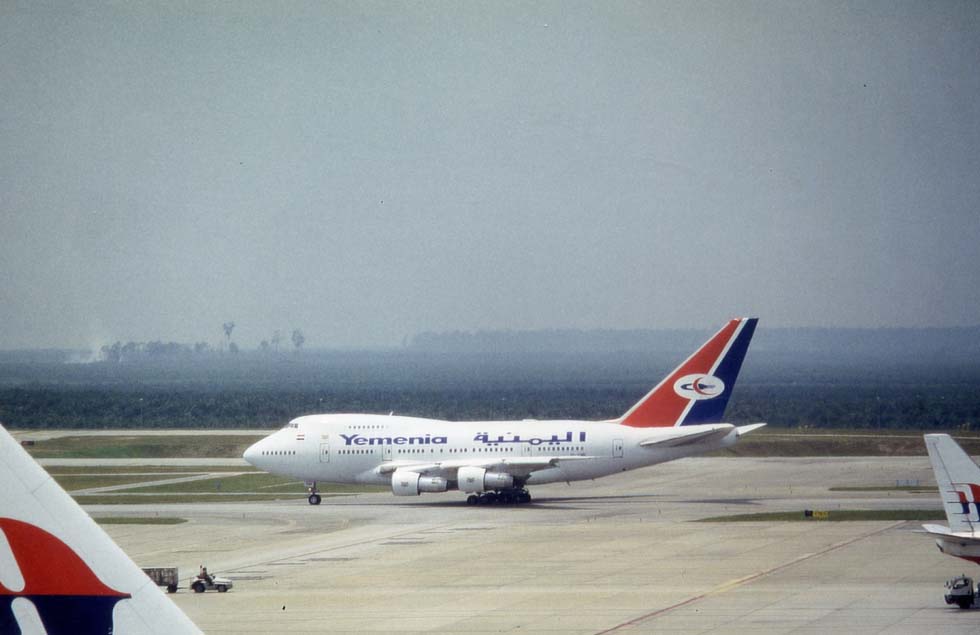 Yemenia, B.747SP, the government plane at Kuala Lumpur on occasion of a neutral summit conference, Feb26, 2003 (WS) In Yemen, terror camps arose, to be fought by using drones. Circumventing Yemen via Oman (e.g. on a Doha – Cape Town flight in 2009, watched by the author) became a measure of caution, even before civil war started in 2014. Houthi rebels of the 40% Shi’ite minority, helped by Iran, took over the capital Sana’a, whereupon Sunnite “Saudi Arabia has begun launching air strikes in Yemen”. This report by Khaleej Times (March27, 2015) continued: “Terrified Sanaa residents flee night of bombing.” Flag carrier Yemenia had to interrupt services temporarily, the B.747SP of Yemenia was destroyed at Aden (Al Adan), the retired president Saleh was killed and the country tumbled into famine and epidemics. The New York Times (Feb20, 2018) reported: “Last November, Houthi militants fired a missile at a major civilian airport outside Riyadh.” Saudi-led forces answered with an offensive. Red Cross relief flights started in Djibouti. Aden remained under government control and (as aerotelegraph.com reported in May 2022), for the first time since 2016 Yemenia started a relief flight from troubled Sanaa, returning to Aden. For Ocean shipping, a security corridor was organized. On Jan17, 2022 Houthi rebels made a drone attack on the oil industry of Abu Dhabi. The anti-Houthi coalition with Saudi Arabia comprised the Gulf Cooperation, Jordan, Morocco, Egypt and Pakistan. According to The New York Times (July28, 2018), the USA “provides $1.3 billion a year in military aid to Egypt, more than to any other country besides Israel.” Ruler al-Sisi ameliorated the relations also with Israel and a report (translated from Le Monde diplomatique, May 2019) commented: “The project of an ‘Arabian Nato’ is a symbol of this desire for cooperation with Washington and Tel Aviv.” As war raged in Libya, neighboring Tunisia was added to the group of NATO allies without membership, comprising Morocco, Egypt, Jordan, Kuwait and Bahrain. A result of all the dangers had been US president Obama’s decision in 2016 to continue stationing international troops in Afghanistan. But in 2018 president Trump called US presence in question, whereupon defense minister James Mattis retreated. When in 2017 US president Trump visited crown prince Mohammed bin Salman of Saudi Arabia, an arms supply worth $110 billion was concluded (Financial Times, June07, 2017). With an annual defense budget of $67 billion e.g. in 2013 (according to SIPRI), Saudi Arabia ranked number four global in military spending. In Syria under Assad, Iranian missiles against Israel were stationed, whereupon the USA and then Israel fired at Assad’s Syria. On Feb06, 2020 a Russian Airbus A320 with 172 passengers, bound for Damascus, made an emergency landing at a Russian base in Syria (according to Kathimerini online). In 2019 Islamist jihadists, Iran-financed though being described as non-Shi’ite, fired missiles from Gaza at Israel, which answered. Donald Trump’s recognition of the Golan Heights as Israel’s strategic outpost against Syria was highly appreciated by prime minister Netanyahu. Opening Ramon international airport at Eilat in 2019 could have been considered a strategic reserve. In Jan 2020 Donald Trump promoted a regulated Palestinian state under condition that for c.30% of the West Bank region (connected by bus lines) Israel’s sovereignty should be recognized. Palestine Mahmoud Abbas had kept peace since 2005, but the leadership was reluctant like also king Abdullah of Jordan, facing the threat by the radical Hamas of Gaza. The former German foreign minister Joschka Fischer (translated from Sueddeutsche Zeitung, Dec28, 2017) has stated: “The Israeli-Arabian conflict was overshadowed by the great rivalry between Iran and Saudi Arabia (…). Until now it is demonstrated mainly by the deputy wars in Syria, in Yemen, feared also in Lebanon.” Financial Times (Oct15, 2020) reported: “The US had recently stepped up pressure on the two Shia groups (…) linked to Hizbollah …” Lebanese and Israeli officials for the first time held talks. In 2020 the United Arab Emirates and Bahrain concluded ameliorated relations with Israel, then followed also by Sudan and Morocco. In September El Al had its first flight to the UAE, allowed to fly over Saudi Arabia. And Etihad started flights to Israel. The ‘Abraham Accords’ for maintaining peace were signed between Israel, the UAE and Bahrain in 2020, hosted by Donald Trump. Media reported Netanyahu’s flight on Nov22, 2020 with some private jet to Neom in Saudi Arabia and a secret meeting with the Crown Prince was supposed. In Syria, Shiite arms depots provoked bombardments by Israel, and Assad pinned his hope on Russia. President Trump has required tougher terms in the nuclear treaty with Iran, in vain, and in May 2018 he cancelled it. Tehran flights were announced to be interrupted in Sept 2018 by Air France and British Airways. Iran Air and Qeshm Air had to find places for refueling and Mahan Air, accused of Iranian military transports to Syria, was excluded from operating into Germany. Iran refused the concluded control by the AIEA and in May 2019 it confirmed its nukes development. UN sanctions for terminating its crude oil exports to China, India and Japan were targeted, whereupon Le Monde (July13) asked if “Russia and China, reputed close to Iran, would not put a veto.” Then India reduced oil imports from Iran. Protests emerged in Iraq and even in Iran, where its air force commander had stated: “Our future generation would get knowledge necessary for the day when Israel, as promised, would be destroyed” (Juedische Allgemeine, Jan24, 2019). According to the New York Times, Iran has tested in 2016-17 ‘Sharud’ missiles, intended for a range up to 16,000km, capable of a nuclear attack on Europe and the USA. After Iran’s missile shoot at a US drone, some flights avoided that area. In 2019 an attack on Saudi Aramco’s Abqaiq works near Dammam hit oil production and Financial Times (Sept16) informed: “Iran-aligned Houthi rebels (…) claimed responsibility for what they said was an attack by 10 drones (…). Mike Pompeo, US secretary of state, accused Iran of launching an ‘unprecedented attack on the world’s energy supply’…” About limits to export nuclear technology to Saudi Arabia, Financial Times (July31, 2019) informed that “Crown Prince Mohammed bin Salam has voted to match any Iranian move to acquire a nuclear bomb.” In Dec 2019 Shi’ite terrorists attacked the US embassy in Baghdad. Iran’s Quds Force major general Suleimani died on Jan03, 2020. “He was killed in a drone strike on Baghdad International Airport that was authorized by President Trump” (so reported by The New York Times, Jan04, 2020). Iran’s supreme leader Ayatollah Khamenei had to proclaim revenge and missiles were fired on two US bases in Iraq, without casualties. In late 2021 US troops abandoned Iraq officially. On Jan08, 2020 the Boeing 737-800 UR-PSR of Ukraine International Airlines has crashed with 176 victims after departure from Tehran on a flight to Kiev. Military missile shots were proven, whereupon president Rohani and the Ayatollah admitted a mistake. In Tehran courageous protests against the dominant politics emerged, knocked down. A Lufthansa flight to Iran had altered course immediately. Air France and KLM have interrupted Iran flights. Iran Air stopped flights to Europe in March 2020. The FAA interdicted US flights crossing Iran, Iraq and the Gulf. Sueddeutsche Zeitung (SZ online, Jan21, 2020) reported that Emirates Airline “at present is flying still to Tehran, but otherwise circumvents Iran, namely to Europe via Iraq. Many other airlines, e.g. Qatar Airways, Turkish, Aeroflot, FlyDubai or Air Arabia continue flying over Iran.” The report with an interview by Monika Maier-Albang provided an insider information: “Georg Fongern of the pilots’ union Cockpit criticized that passenger planes must fly over trouble spots such as Iran – some pilots even were put under pressure.” Iran’s stockpile of enriched uranium has attained 12 times the level permitted under the 2015 accord. In July 2020 a plant in the nuclear center at Natanz exoloded and ‘industrial sabotage’ was assumed (so reported by Financial Times). On Nov27, 2020 Iran’s nuclear mastermind Mohsen Fakhrizadeh was killed near Tehran. But Iran boosted its nuclear program. And (according to Le Monde diplomatique) in the province of Deir ez-Zor on the Euphrat river it has recruited a secret army. On 7 October 2023 Hamas started its massacre against Israeli. And Hamas, financed by mysterious international sources, restarted to fire missiles from Gaza and other regions against Israel, following the order by Iran’s despotism to eradicate the Israeli, ordered already by Adolf Hitler. But US president Joe Biden confirmed to protect Israel. Air traffic to Tel Aviv was reduced and there started repatriation flights. Even Iran-sponsored Houthi rebels in Yemen tried to fire missiles, but Saudi Arabia confirmed to shoot them down. In late Nov 2023 a pause in firing was concluded, but Hamas fired missiles once again. War continued, Iran fired missiles on the Kurdish region of Iraq and in April and on 01 Oct against Israel. Hizbollah fired from Lebanon, whereupon Israel answered and civilians suffered. Lufthansa and others avoided Iran’s airspace and interrupted flights to Israel. When on 30 June 2024 an El Al B.737, flying from Warsaw to Tel Aviv, had a landing at Antalya due to a medical case, tanking was refuted and so it had to continue the flight to nearby Greek Rhodos (reported by aerotelegraph). In Jan 2024 US secretary of state Antony Blinken and Israel’s prime minister Netanyahu concluded to target a UN mission for Gaza. And after Houthi endangered the shipping through the Red Sea, the USA answered with military attacks. In Nov 2024 Donald Trump once again was elected president of the USA and he became expected to continue protecting Israel. The West Bank region should not come into the hands of warriors. Hope emerged when in late 2024 a ceasefire between Israel and Lebanon was concluded. Russia was granted by Syria to maintain an air force base at Qamishli in the north-east, another one near Latakiya, a naval base at Tartus and it changed the airport of Sheyrat (east of Homs) into an air force base. In Syria, after Iran-supported Assad and Russia had fired bombs on Aleppo, in late 2024 HTS rebels under al-Jolani were welcomed there and on 8 December they captured the capital Damascus. Assad had already fled to Moscow, where he received asylum. At Damascus Airport all flights were halted. Israel attacked Syria’s strategic weapons arsenal. The rebel force HTS is led by Ahmed al-Shara, “also known by his nom de guerre Abu Mohammed al-Jolani (… who) has sought to project order and stability” (according to The New York Times, nytimes.com). On 26 Oct 2024 Israel Air Force’s successful attack on Parchin in Iran hit some missile plant. Israel’s minister of defense Yisrael Katz was reported evaluating attacks on Iran’s nuclear production plants, but they are hidden subterranean. The well-informed timesofisrael.com informed: “US, UK, France, Germany express ‘serious concern’ over Iranian plans to launch new nuclear centrifuges.” Provocations on the Indian Subcontinent Since the 90s LeT and JEM groups from Pakistan repeatedly attacked India, e.g. in 2008 the Mumbai main railway station. The tradition of both was described (by Financial Times, March02, 2019) as having been “led by veterans of the US- and Pakistan-backed mujahideen war against Soviet forces in Afghanistan in the 1980s…” In 2018 Pakistan’s new prime minister Imran Khan and India’s Narendra Modi concluded peace. But in Feb 2019 JEM killed Indian paramilitaries in Kashmir. Prime minister Modi, backer of the militia RSS, ordered an airborne missile strike and on Feb27 Pakistani planes attacked. On Feb28 tz reported: “Pakistan blocked temporarily its airspace, India closed six airports and banned civil aviation in a vast area north of New Delhi.” After four days, the airspace was reopened. At Easter 2019, jihadists started massacres in Sri Lanka. And in the Kashmir region, tensions between China and India revived in 2020. No East-West Conflict In Russia, president Putin has kept nationalist war-mongers under control. Russia targeted stability with the ODKB (in English translated CSTO or Collective Security Treaty Organization). Its predecessor had been founded in 1992 after the CIS, succeeded by ODKB in 2002. As its members were listed (e.g. in 2021) Armenia, Belarus, Kazakhstan, Kyrgyzstan, Russia and Tajikistan. Outside was always Ukraine, where politics risked a clash with Russia in favor of EU partnership. In 2008 at the Bucharest summit, Ukraine’s NATO membership had been envisioned. Global Research News (March10, 2014) has reported Putin’s statement: “Aligning Ukraine with NATO means US missiles in Ukraine.” In 1994 already, Ukraine had been forced to return its nuclear weapons to Russia, like (according to Wikipedia) also Belarus and Kazakhstan. The Crimean peninsula is Tatar and Russian-populated, by the Soviets incorporated into Ukraine only after Stalin’s death. After in March 2014 Putin had sent troops to the peninsula, the Crimeans voted to become part of Russia. In the Donetsk district, pro-Russian rebels occupied Donetsk airport. On July17, 2014 publics were shocked by the shoot-down of Malaysia Airlines’ B.777-2, 9M-MRD, on flight MH17 Amsterdam – Kuala Lumpur over Eastern Ukraine, killing all the 298 passengers, mostly Dutch, and the 15 crew members. Bodies were transferred by train to Kharkiv and by plane to the Netherlands. Wikipedia reported: “Immediately after the crash, a post appeared on the VKontakte (…) separatists claiming responsibility for shooting down a military aircraft, but after it became clear that a civilian aircraft had been shot down, the separatists denied any involvement.” But in 2018 researches were published, proving that it was a Russian ‘Buk’ missile, which killed people. A route crossing Eastern Ukraine had been common practice for flights from Europe to South East Asia, but ICAO has warned and British Airways, Korean and Asiana had avoided it already. “MH17 was diverted from a normal South Easterly route over the sea of Azou to a path over the Donetsk Oblast”, stated a report by Globalresearch. After the atrocity, also other airlines avoided that route. Malaysia Airlines suffered losses and had to be nationalized. Another consequence was described by Flight Intl: “ICAO is to host a prototype centralized system intended to provide information on conflict zones, enabling airlines to assess route risks …” But in the meantime it was given up “on account of political pressure by countries concerned…” (translated from SZ online). German chancellor Angela Merkel and French president Francois Hollande have met with Putin and Ukraine’s president Poroshenko in Belarus. But separatists blocked railway lines in Ukraine. And in Nov 2018 the naval incident at the Kerch Strait, the entrance to Ukraine’s seaport of Mariupol, was a shock. In 2019 Volodymyr Zelensky became elected president and in August 2019 rail passenger services restarted in Donetsk after having been suspended during five years. But separatists’ rebellion continued. Georgia had the South Ossetia war in 2008, then Russia occupied also Abhkasia, and Georgia abandoned the CIS in 2009. Protesters were a disadvantage for Georgian Airways. In July 2019 Russia interrupted air traffic to Georgia. And in 2022 Georgia and Moldova targeted EU and NATO partnership. In Kazakhstan’s economic center Almaty, protests emerged in Jan 2022 and rioters captured the airport. The New York Times informed that the Kazakh president Tokayev called the ODKB of Russia and allies to “help Kazakhstan to overcome this terrorist threat.”
Belarus under Alexander Lukashenko, president since 1994, then dictator, had common troop training with Russia. In May 2021 a Ryanair B.737 on a flight from Athens to Lithuania was forced to land at Minsk in Belarus. A bomb aboard has been a fiction and in reality the critic Protasevich was captured. Sanctions against Belarus were imposed, its Belavia (see the chapter Open Skies) was excluded from flights to the EU and airlines of Europe were advised to circumvent Belarus, not accepted by Russian authorities. In autumn 2021 Belavia smuggled in refugees from Turkey, Syria, Iraq and Iran. From Minsk they were transported close to the EU borders, where they were strictly stopped by frontier guards. Also Turkish Airlines, Aeroflot, daughter Pobeda, Fly Dubai and Cham Wings of Syria were estimated (by Neue Zurcher Zeitung, Nov12) to be involved in that business. The EU announced sanctions and the Iraqi government stopped flights to Minsk. On Nov12, 2021 it was reported (by Tagesspiegel) that Belarus forbade people from Iraq, Syria and Yemen to fly from Turkey to Minsk, acted under order by Ankara – assumed (via n-tv.de) for protecting Turkish Airlines from sanctions. Cham Wings interrupted flights to Minsk, Belavia excluded refugees from boarding its flights Dubai – Minsk and it suspended refugee transports from Toshkent. On Nov18 Iraqi Airways had its first flight from Minsk to Baghdad with a stop at Erbil for returning refugees to their Shiite Kurdish region of Iraq, threatened by Sunnite terrorists. And it was reported (by aerotelegraph.com) that on account of Putin’s war, Belarus announced to start flights Minsk-Tel Aviv in June 2022 via Russia with a refueling stop at Baku in Azerbaijan. For protecting Eastern Europe, a command had been concluded with six eastern NATO member states. After in 2015 prime minister Tsipras of Greece has chatted up the Kremlin, Putin offered military assistance if required (according to ‘To Vima’, June17, 2015). But three days later, La Nuova reported that Putin offered purely financial help. Once French president de Gaulle had assumed that Russia could not keep the Asian territory for ever and the growing Chinese population in Russia’s Amur region could signal it. But already in 2014 the presidents Putin and Obama had met in Beijing, both welcomed by China. In Russia, the political opponent Alexei Navalny suffered in August 2020 a breakdown during a domestic flight, caused by nerve poison, he could escape to Berlin into a clinic and he returned to Moscow –where he was imprisoned and in 2024 he died in a Siberian prison. In 2021 it was reported (via wikipedia.org): “Ukraine is preparing to formally apply for EU membership in 2024.” And the Brussels summit considered also NATO membership. Russia reacted by relocating an extraordinary moving of troops to the border of Ukraine. In Dec 2021 the presidents Biden and Putin started video talks, and French president Macron together with the new German chancellor Olaf Scholz insisted on stable borders. But on Feb21, 2022 president Putin recognized separation of the Donetsk and Luhansk districts and he started an all-out war on Ukraine, bombing Mariupol and civilians. People tried to flee, flights to Ukraine were suspended and 57% state-owned Aeroflot and other Russian airlines were excluded first from entering the UK, Canada and then the EU and the USA. Russia banned flights of many airlines and they had to choose the South-Asian route. Finnair reactivated the North Pole route for Asia flights. An Aeroflot B.737 flight Moscow - Verona did fly probably via Kazakhstan, was stopped and had to refuel at Istanbul. An A350 of Aeroflot did return from Miami via Canada, allowed only once. Aeroflot’s international flights were suspended, except to destinations in Asia, South America and Africa. And some Aeroflot bosses gave up their job. Aeroflot started flights to Mideast with the Sukhoi Superjet 100 of Rossiya from Sochi on the Black Sea on account of its limited range (so reported by aerotelegraph.com, March28). Start of the Irkut MC-21 (MS-21) was delayed by sanctions. In May 2022 a Ukraine International B.737 arrived in Germany with the national soccer team. Ukraine’s elected president Zelensky did not flee from Putin’s war, which provoked an unprecedented help for Ukraine by NATO states. The war prompted Sweden and Finland to approach NATO and in 2023 Finland first joined NATO. And Sweden participated in the ”Steadfast Defender” maneuvers of the NATO members. Putin threatened by announcing to station nuclear warheads in Belarus. The EU welcomed Ukraine for membership, however to be delayed. In late June 2023 the Russian ‘Wagner’ mercenary group shocked Putin by occupying Rostov na Donu in Russia and they even tried a march to Moscow, but then its commander Yevgeny Prigozhin resorted to Belarus. On 23August 2023 he was killed over Russia by explosion of a private plane. Putin’s war provoked a setback also for the Russian aviation industry. The MS-21 (MC-21) from Irkut had its test flight in 2017, however with two P&W engines from the USA. In 2023 the news were reported (by aerotelegraph.com) that the MS-21 should be delivered in 2024 by Yakovlev with Russian engines, in future with a capacity of 211 passengers. Ukraine International Airlines was placed into bankruptcy administration in Nov 2023 (according to Wikipedia.org) on account of traffic interruptions. And Putin was announced to get soldiers from North Korea’s tyrant Kim, whereupon South Korea considered weapons exports to Ukraine. A compromise would be necessary, for Russia never in history was defeated. Afghanistan Turmoil In early 2021 the U.S. defence secretary L.J. Austin recommended to the elected president Joe Biden “that 3,000 to 4,500 troops stay in Afghanistan (…). On April 6, Mr. Biden told Mr. Austin and General Milley that he wanted all American troops out by Sept.11. Before the July 4 weekend, the United States had handed over Bagram Air Base, the military hub of the war, to the Afghans, effectively ending all major U.S. military operations in the country” (so reported by The New York Times, Aug 2021). 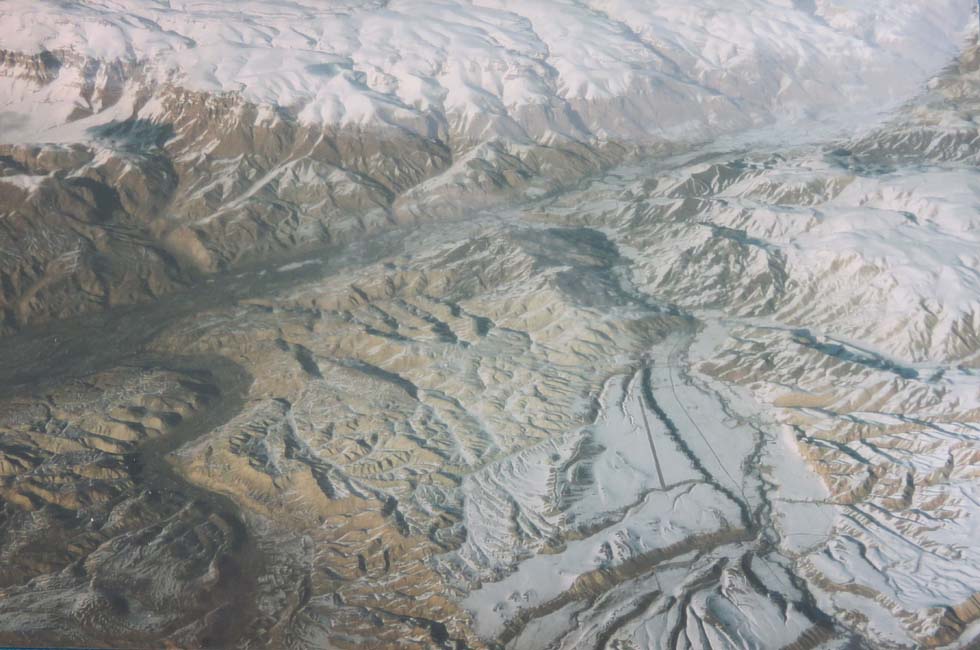 Afghanistan somewhere? (WS, 2003) Discrimination of women and famine became characteristic. According to Der Spiegel (Aug28, 2021) 82,300 US citizens, 11,500 British and a lower number from other countries were evacuated from Kabul by military flights. Main destinations were Doha in Qatar, Dubai and others. The first civil airline, which transported refugees from Kabul was Qatar Airways. Russian military planes evacuated refugees to Toshkent in Uzbekistan. On Aug18 it was reported that Lufthansa brought refugees from Toshkent to Frankfurt. Turkey offered to protect the airport of Kabul (Le Monde diplomatique, Sept 2021). On August 26, 2021 a suicide bomb attack at an entrance gate of Kabul airport killed at least 182 people, carried out by IS-K, the Islamic State-Khorasan. On Aug29, bbc.com reported: “A US drone strike in Kabul has prevented another deadly suicide attack at the airport…” Despite the dangers, some airlines then offered special flights from Kabul. Kam Air and PIA asked $1200 for an escape to Islamabad in Pakistan. The Taliban prime minister Mohammad Hasan Akhund targeted some diplomatic course. It was demanded that more foreign airlines should resume flights to Hamid Karzai International Airport of Kabul. In Oct 2021 flights to Kabul by Emirates and Turkish Airlines were reported. Innumerable Afghan refugees were sent back from Iran, so reported by aljazeera.com, showing a bus transport. And Ahmed Massoud continued to protect his territory against the Taliban. General Mike Milley has considered a cooperation with the Taliban, for it is the enemy of IS-K terrorists. Russia announced to protect Tajikistan and Uzbekistan against terror groups. In Oct 2021 Uzbekistan officials had talks with a Taliban delegation. China shares a short border with Afghanistan “which under the Taliban served as a haven for Uyghur extremists from Xinjiang, the far western Chinese province” – so reported by The New York Times. The Tehrik-e-Taliban of Pakistan had concluded a cease-fire with Islamabad, but on 9 Dec 2021 fighting between this TTP and the army of Pakistan continued (reported by Le Monde, Jan19, 2022). Already in Oct 2021 Pakistan’s airline PIA has interrupted flights to Afghanistan. No Far East Harakiri In 2012 a past government of Japan has proclaimed the uninhabited Diaoyu or Senkaku islands close to Taiwan being Japanese territory, provoking the danger of a war with China. Fortunately the Economist (Sept22, 2012) reported that “an unnamed senior military official stage-whispered to the Washington Post that America would not go to a war ‘over a rock”. In 2016 Cambodia, Laos and Myanmar were listed as the countries receiving Chinese military aid. And about Chinese intelligence capabilities, Financial Times quoted the researcher Roger Faligot: “Guoanbu will become as familiar in the 21st century as the acronyms M16, CIA and KGB were in the twentieth.” In November 2015 the presidents of China and Taiwan made shake-hands in Singapore, for the first time. But in 2018 the New York Times (Feb24) reported about Taiwan that “in recent months, Chinese strategic bombers have been conducting ‘island encirclement’ flights…” The USA continued help for Taiwan and the U.S. Navy is present in the Strait. In 2019 Financial Times (Feb09) reported Chinese president Xi Jinping’s speech “in which he reiterated the ‘One Country, Two Systems’ mantra”, not appreciated by Taiwan’s people, who had elected president lady Tsai Ing-wen. China was reported with an annual defense spending of $252 billion, surpassed only by the USA with $778 billion, according to Der Spiegel (Oct16, 2021). US president Joe Biden confirmed in 2022 during a meeting with Japan’s prime minister Fumio Kashida that the USA would stand on the side of Taiwan in the case of an attack by China (spiegel.de, May23). In Dec 2023 Xi Jinpeng proposed at least a communication with US president Joe Biden. In 2019 Financial Times (March02) had informed that “US secretary of state Mike Pompeo said that any armed attack on the Philippines in the South China Sea would trigger its mutual defense treaty with Washington”. Joe Biden concluded with the Philippines’ president Ferdinand Marcos jun the Enhanced Defense Cooperation Agreement EDCA. New Zealand had exited the ANZUS treaty in 1986. But the AUKUS pact between Australia, the UK and necessarily the USA was signed in 2021. In May 2023 Joe Biden met in Tokyo the prime ministers of Japan, India and Australia, the so-called Quad Group. And in July 2023 the former US Secretary of State Henry Kissinger, 100 years old, travelled to China for reconciliation, followed by Joe Biden.
A permanent threat remained North Korea’s iconic Kim dynasty, killing unbelievers in death-camps. “After WWII, Japan left behind uranium mining and milling operations in the mountains of North Korea – the remains of its own secret nuclear program.” That was a report by the New York Times (Oct27, 2003), continuing: “In a way, it was the export of uranium that financed the military buildup that allowed the North to invade the South in 1950.” Financial Times reminded of the year 1994, “when Bill Clinton had been considering launching a military strike against North Korea” – the danger of a war with China. Japan’s prime minister Shinzo Abe wrote (in New York Times, Sept19, 2017): “In the early 1990s North Korea’s announcement to withdraw from the Nonproliferation Treaty (…) was a wake-up call.” It declared itself a nuclear power in 2005 and carried out a nuclear test in 2006. In that year, starving North Korea spent 15% of its GDP for military purposes, that’s six times the percentage compared to the rest of the globe. “On 13 July 2000 Asiana (originally Seoul Air International) operated the first flight to Pyongyang in North Korea”, had reported the World Airlines Directory, nevertheless in 2010 North Korean forces attacked the South Korean island Yeonpyeon, but the USA did not retreat. In 2012 North Korea started testing strategic missiles, whereupon Japan announced to shoot them down. Attempts to reconcile with Kim Jong-il have failed and under son Kim Jong-un, North Korea tested also submarine-launched ballistic missiles. And in 2022 his Air Koryo was put under US sanctions. The US Thaad missile defense system had to be developed for protecting peaceful South Korea, Japan and Guam, but Beijing and Russia protested against Thaad. “In the long term, the U.S. Missile Defense Agency wants to put lasers on high-altitude long-endurance unmanned planes and destroy missiles in the boost phase” (so reported by Aerospace America, Jan 2017). Fortunately the USA continued to protect South Korea and Japan. Their annual defense budget of $44 billion (according to Global Security.Org., 2017) was minuscule at that time, less than 1% compared to their GDP e.g. in 2015. After China’s president Xi Jinping had visited Donald Trump, Frankfurter Allgemeine (April15, 2017) reported: “Trump attempts to connect the question of American-Chinese commercial relations with a solution of the North Korea conflict.” On April14, 2017 Air China interrupted flights to North Korea’s capital Pyongyang. On August29, 2017 Kim’s missile was fired over Japan – without being shot down. Financial Times (Sept15, 2017) reported: “North Korea has threatened to ‘reduce the US mainland to ashes and darkness.” Towards Christmas 2017 sanctions were concluded within the UN framework. Xi Jinping met Kim and Neue Zurcher Zeitung (Jan12, 2019) assumed that “China takes the part of North Korea’s protective force.” Donald Trump and Kim met in Singapore and in 2019 in Hanoi, but the summit failed. Then Kim travelled by special train to Vladivostok for meeting Putin. Kim’s short-range missiles are able to carry a nuclear warhead to South Korea and its president Moon Jae-in concluded to strengthen military force. When in July 2019 for the first time Russian and Chinese bombers carried out a joint patrol over the Sea of Japan, South Korean jet fighters fired warning shots. In Nov 2021 the superpowers’ presidents Joe Biden and Xi Jinping concluded stability. But after China’s dictatorship renewed threatening Taiwan, it was reported (by Spiegel.de, May23, 2022) that Joe Biden confirmed during a meeting with Japan’s prime minister Fumio Kishida that the USA would protect Taiwan in the case of an attack by China. And Japan announced in 2022 to rise its military spending to 2% of its GDP. Doomsday - or Peace In the age of globalization, the rise of China to a military superpower with a nuclear intercontinental ballistic missile potential has changed strategy. The decisive factor of stability is the dominance of the superpowers. The leaders in annual defense spending had been in 2013 (according to sipri.org) the USA with c. $640 billion and China with $188 billion. In that year the USA spent 4.4% of GDP for military expenditure. Total spending global was $1,765 billion (1.76 trillion) or 2.5% of the global GDP, according to that report. A growing danger was pointed out via The Wall Street Journal (May11, 2019): “Ground-based lasers would target U.S. communications satellites in lower orbits. Missiles launched from enemy ships and aircraft would destroy GPS satellites circling more than 12,000 miles above the Earth. Thousands of miles higher, in geostationary orbits (…), kamikaze satellites would disable America’s most essential nuclear early warning and surveillance satellites.” A Treaty on Open Skies for surveillance flights has been signed in 1992, but in 2020 Donald Trump accused Russia of abusing it. Russia has ended the Nunn-Lugar program. “For 30 years this program offered real security by preventing the loss of nuclear material to criminals and terrorists” (New York Times, May23, 2020). The most horrible threat is the nuclear weapons potential. For 1985 the global total was around 50,000, in 2001 down to c.19,000, the USA and Russia being almost equal with c.9,000 each (according to Dan Smith) and in 2020 a global total of 13,400 was reported. In 2022 a number of 12,000 nukes was estimated by the peace research institute SIPRI, and China extended more and more its nuclear armament. Already in 1968 a preventive treaty had been concluded between the USA, USSR and other countries. President Reagan and Mikhail Gorbachev have signed in 1987 the INF treaty for banning medium-range missiles. In 2010 U.S. president Obama and Russian president Medvedev had agreed on a nuclear arms reduction. At that time the USA, Russia, China, the UK, France, India, Pakistan, North Korea and allegedly Israel were listed owning nuclear weapons. Iran prepared its nukes development and also Iraq’s Saddam, Libyan al-Qadhafi and the apartheid regime in South Africa of the past were accused of nuclear ambitions – and now still more states. Long-term president Vladimir Putin warned the USA not to station medium-range missiles in Europe and U.S. national security adviser John Bolton accused Russia of violating the INF treaty. President Trump withdrew from the treaty in 2019 and Putin did it the following day (info via Wikipedia). China has refuted the treaty from the beginning. In 2019, on occasion of the Munich summit, German chancellor Angela Merkel has proposed an extended INF treaty between the USA, Russia and China. An all-out nuclear war is considered by scientists leading to the end of mankind, for the planet would be covered by a dense layer of ice, like 650 million years ago when only a few microorganisms have survived. Pope Franciscus (Francis) condemned the nuclear armament. And contemporary philosopher Peter Sloterdijk admonished: “World’s society will be a society of caution, or it will not be.”
|
